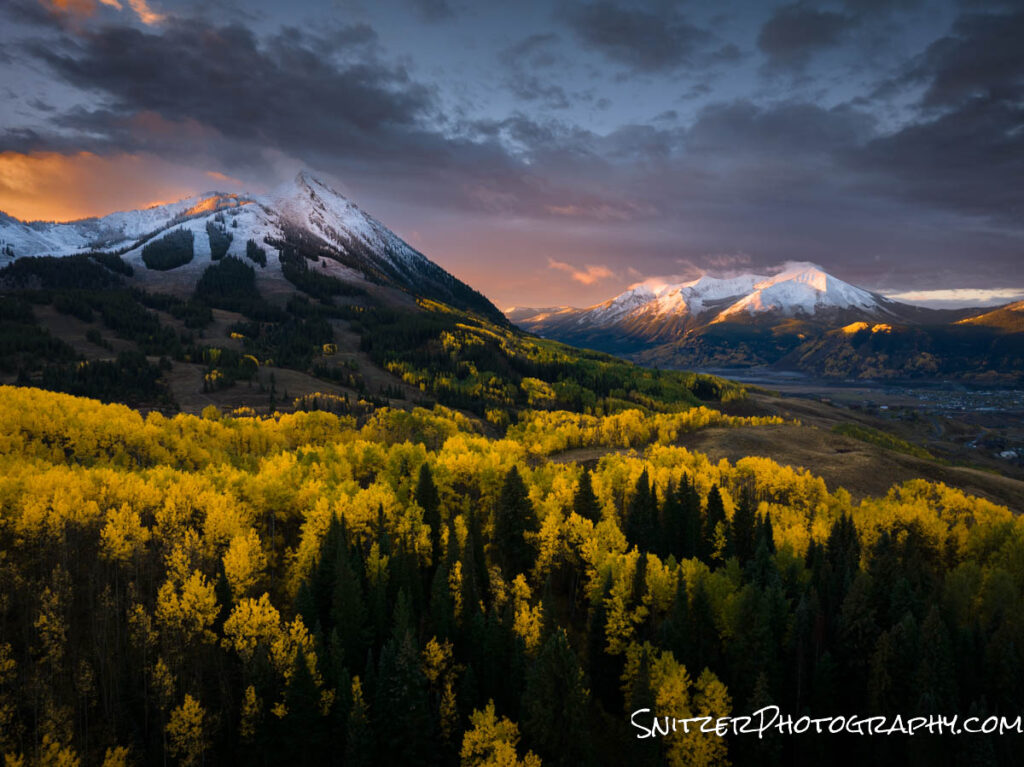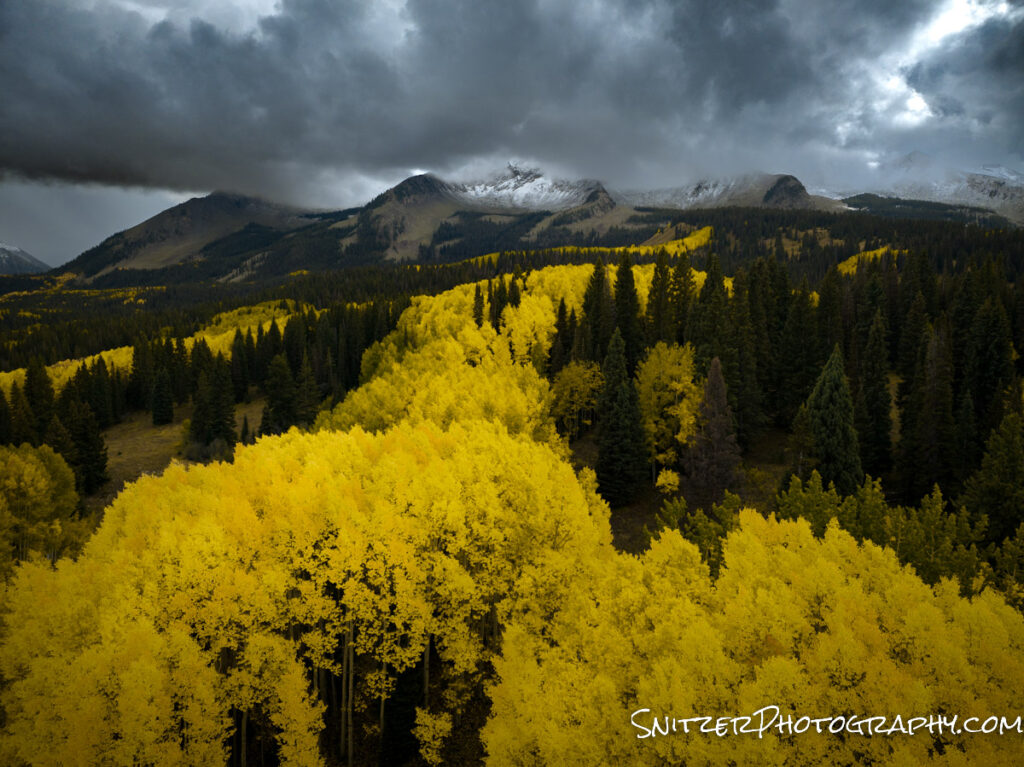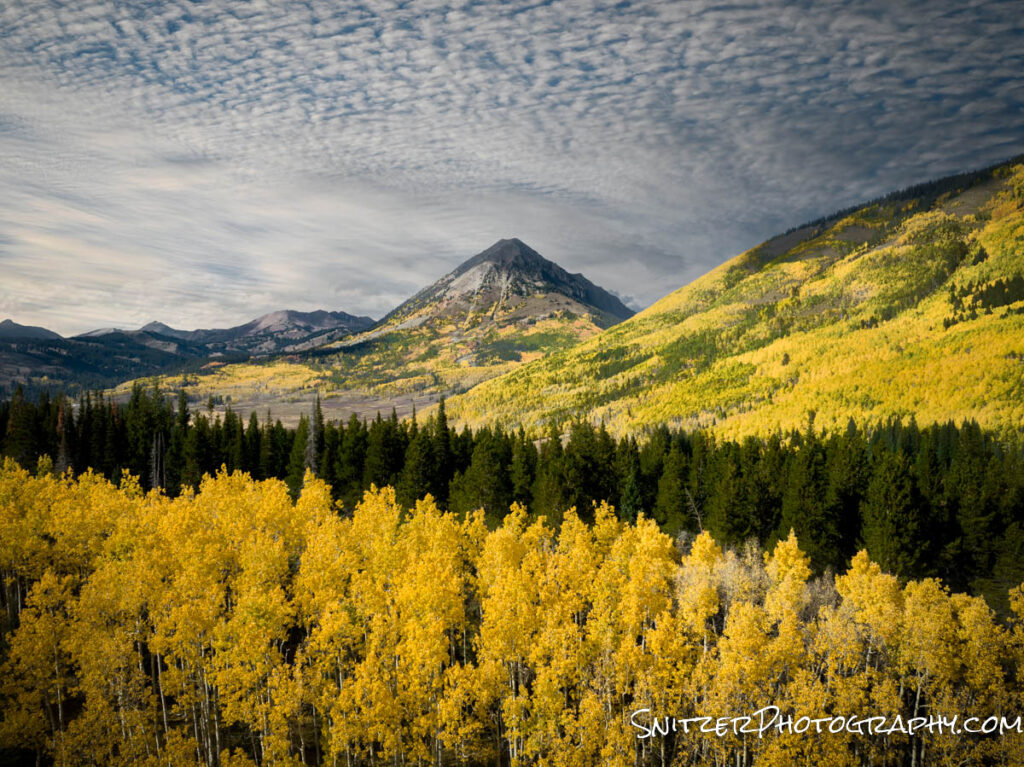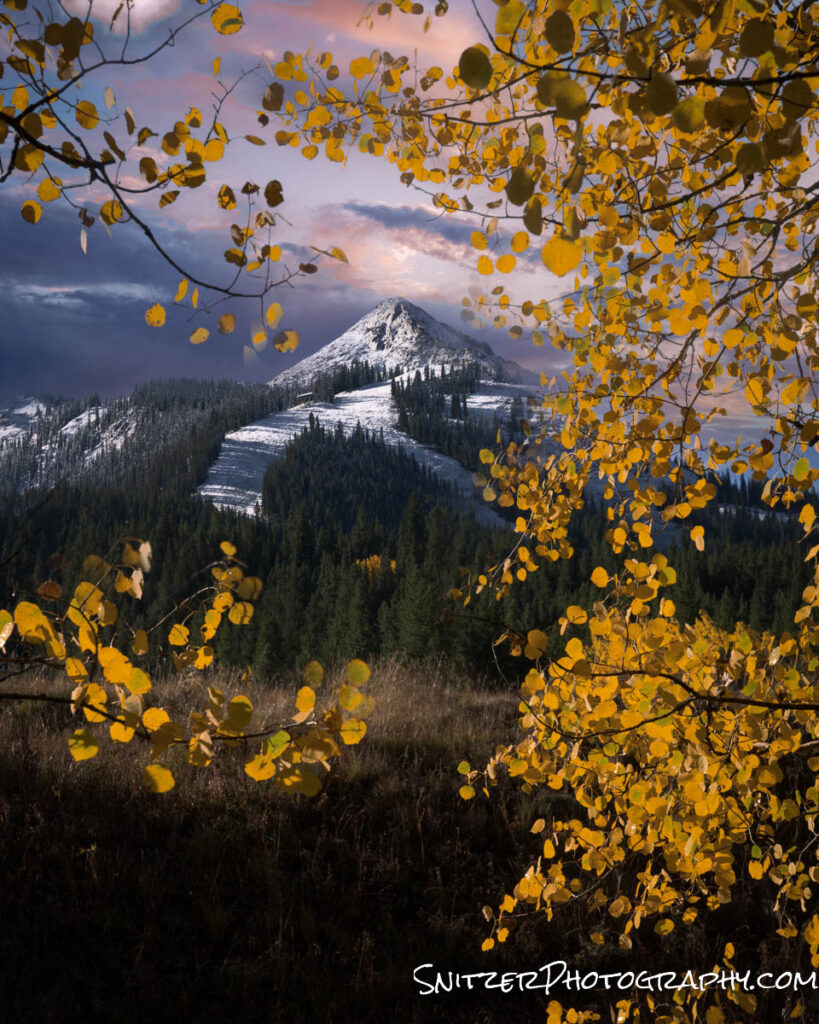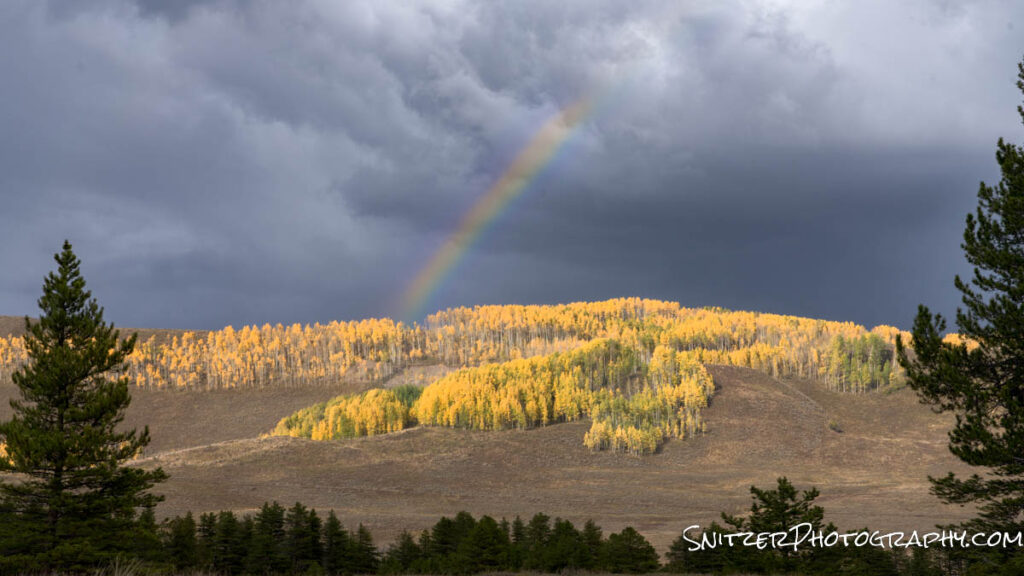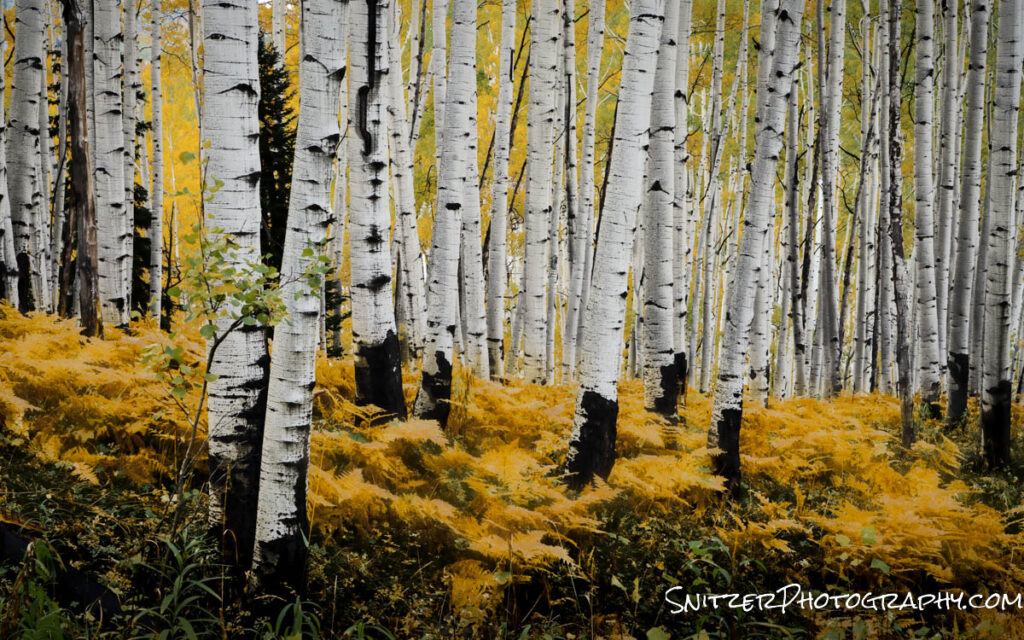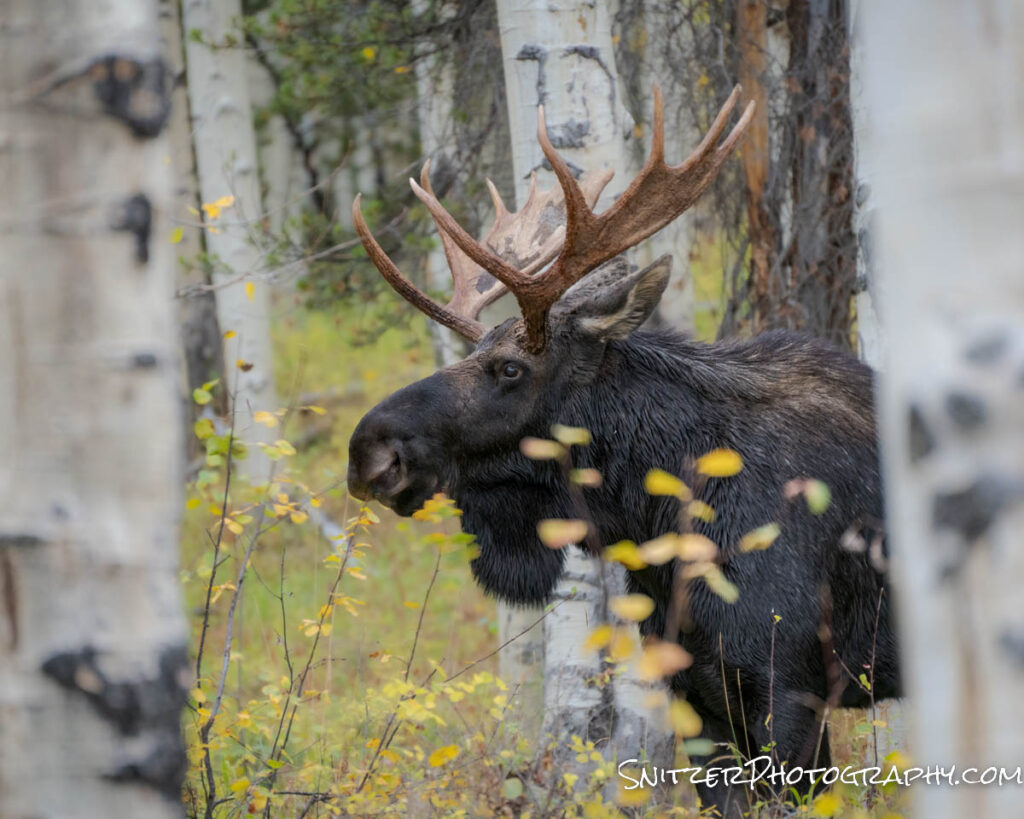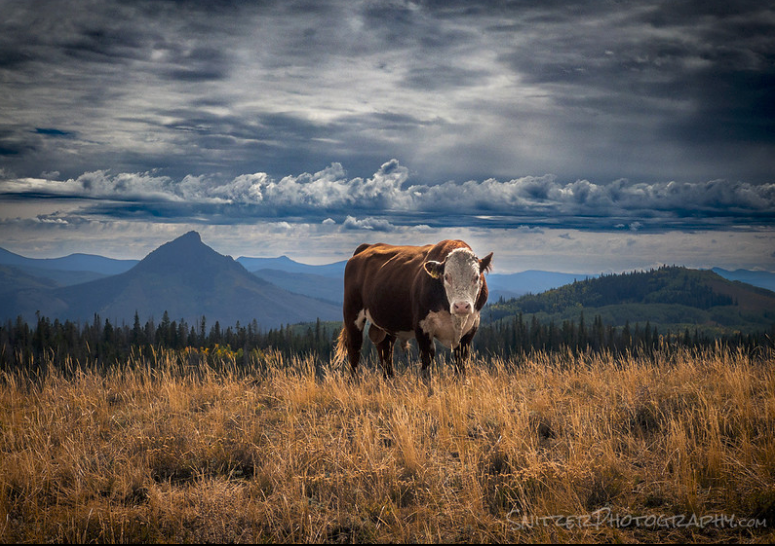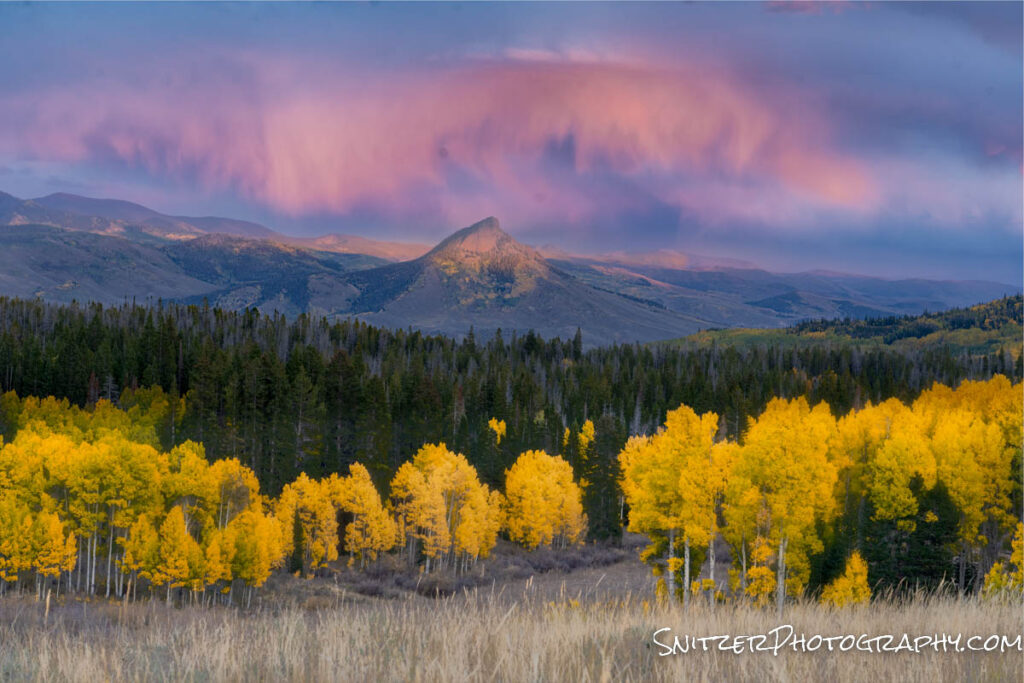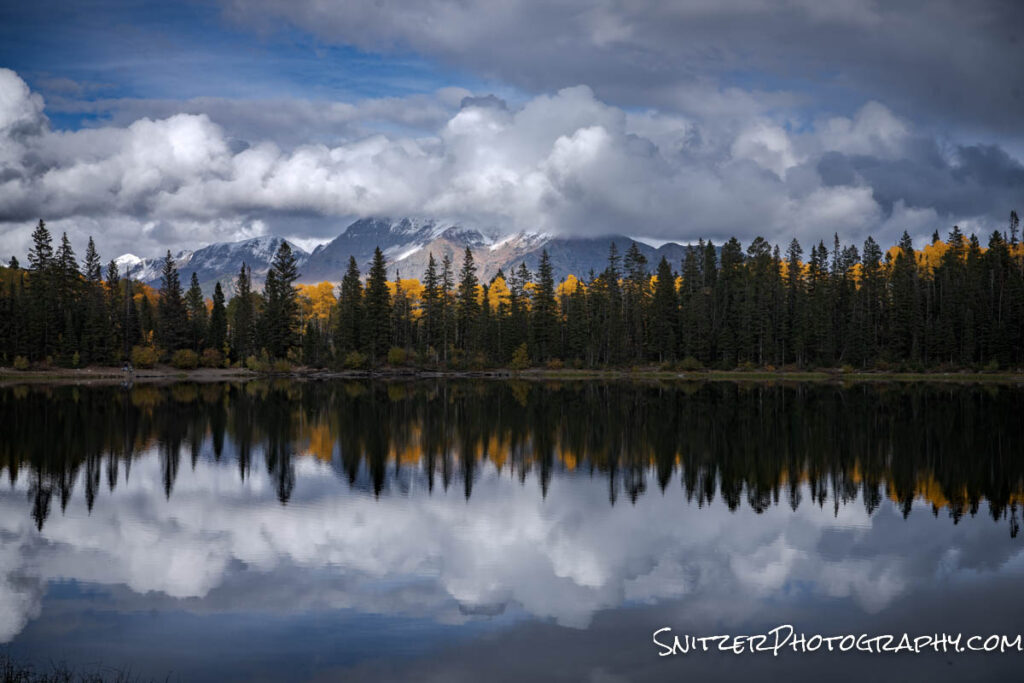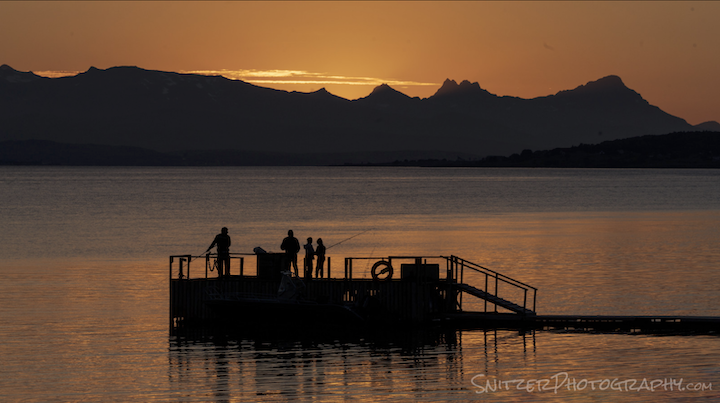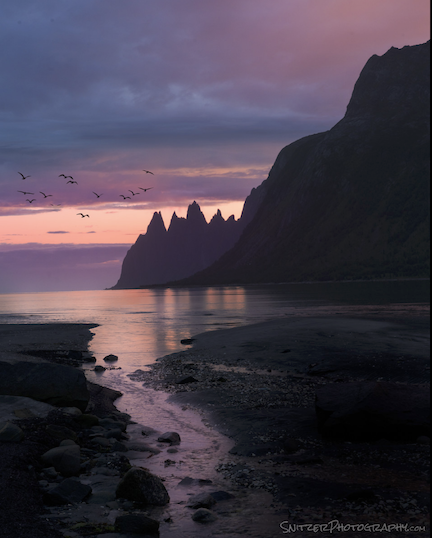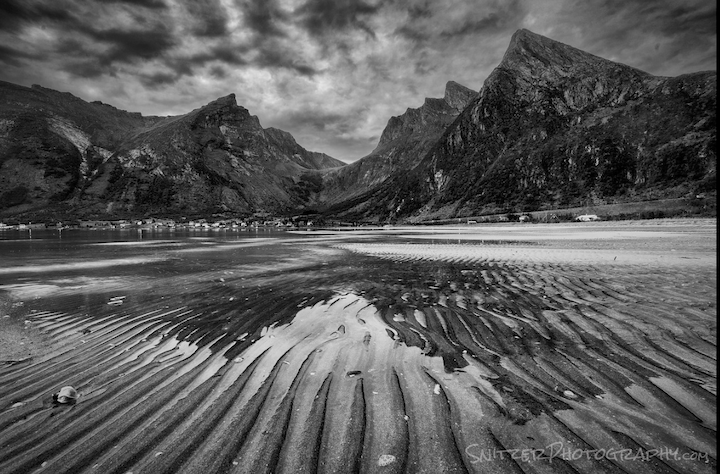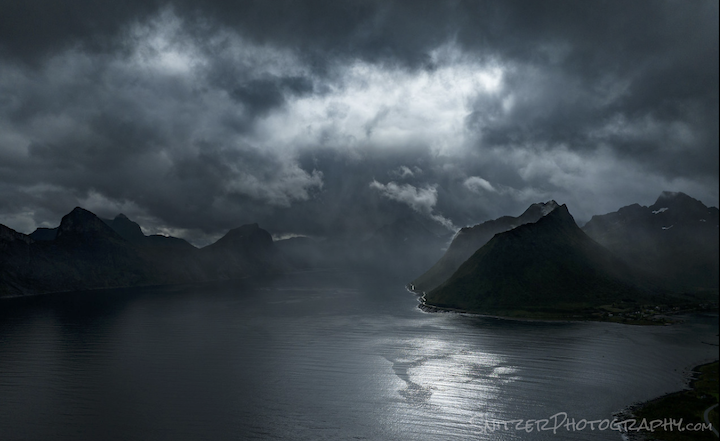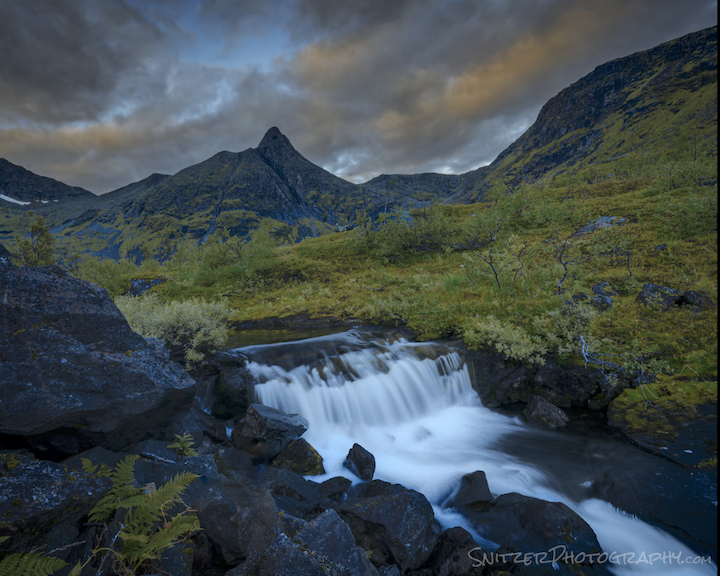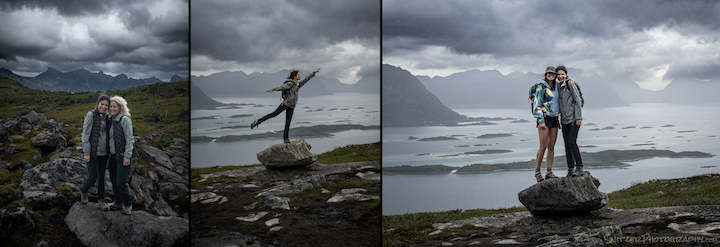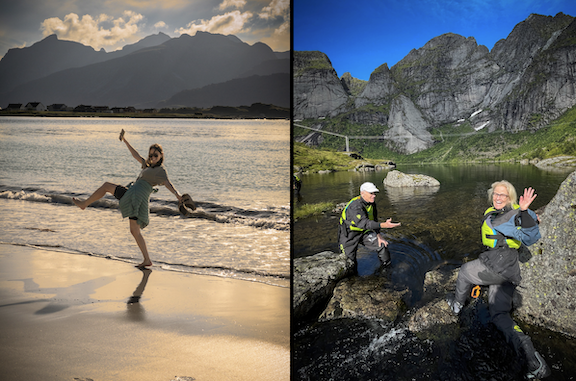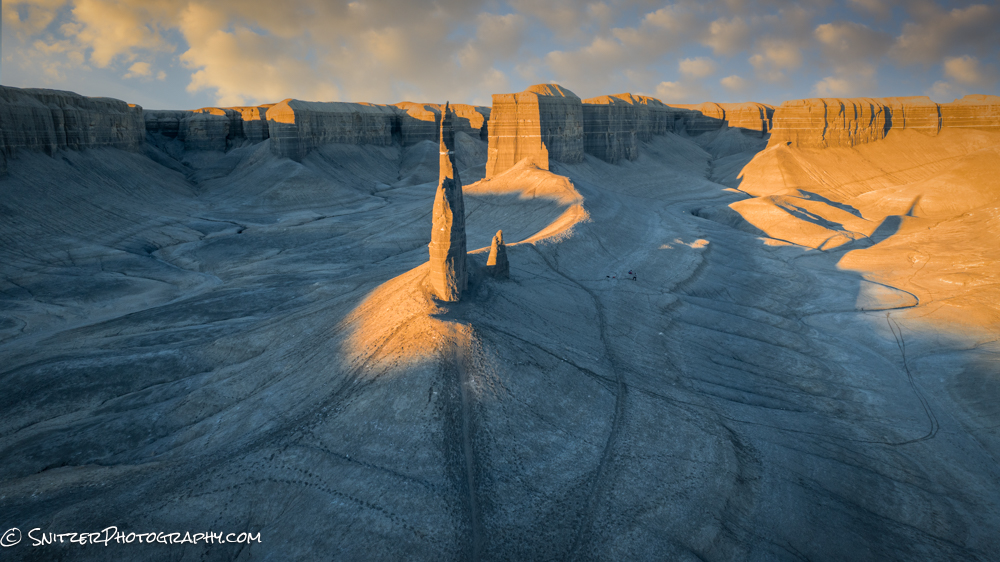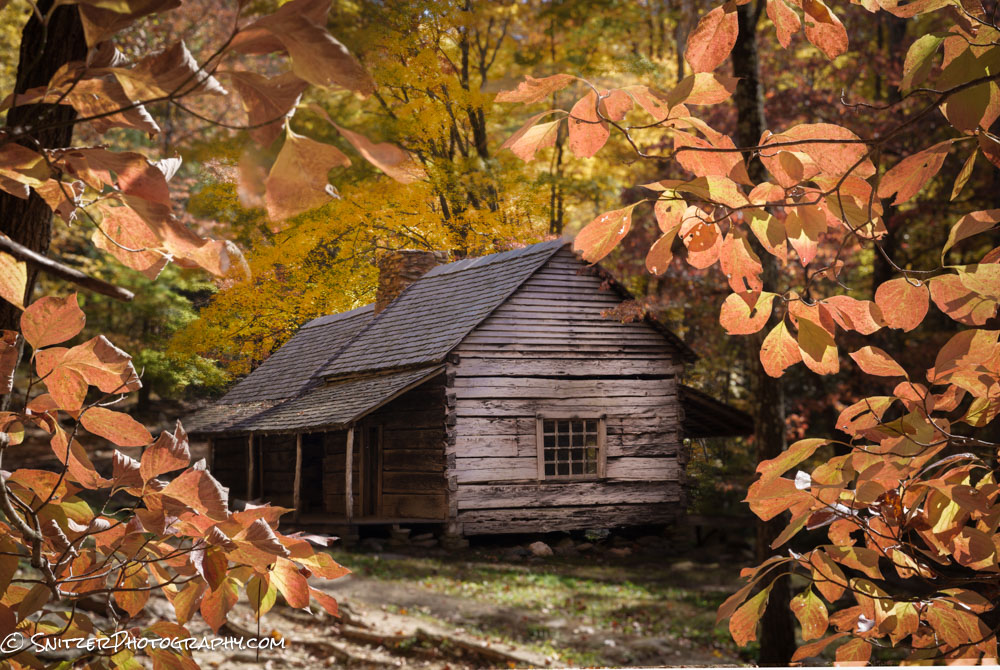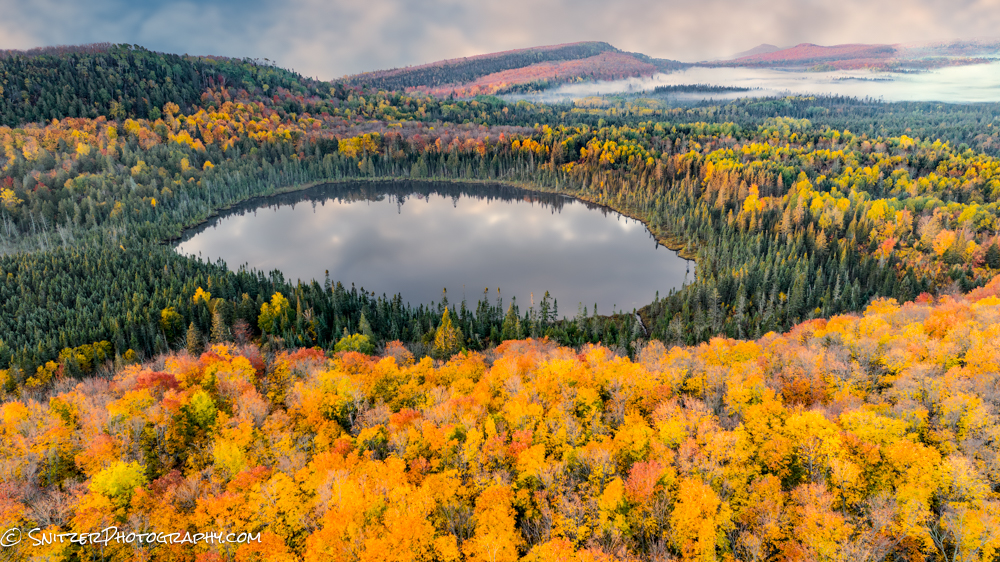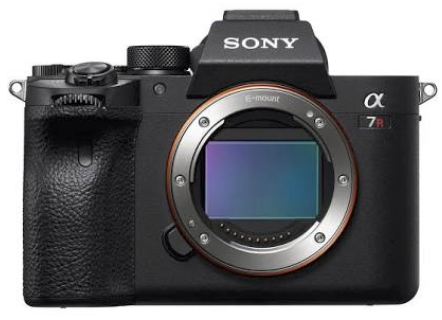Apple 13Pro vs Sony A7r IV in difficult light
So how good is an iPhone against state-of-the-art 61MP Sony? Also, while we’re at it, which produces the best results for the Sony? HDR processing or exposure blending in Photoshop?
I took three bracketed shots (2 stops apart) in difficult light. The foreground is quite dark against the brilliant morning sky. The photo on the left was produced by exposure blending the darkest and lightest exposures in Photoshop. I used the “select sky” tool to quickly create a mask to insert the darker sky into the brighter foreground photo. On the right is the HDR image created in Lightroom. Zoomed out they look pretty similar (although the Photoshop version has a bit more snap/cleaner).

However, when you zoom way way in at 300% the HDR photo (on left) looks pretty weird. The leaves have some funny ghosting on them and we’ve lost some sharpness. HDR software can have a hard time with fine details against brightly colored skies. The Photoshop image on the right is much cleaner.
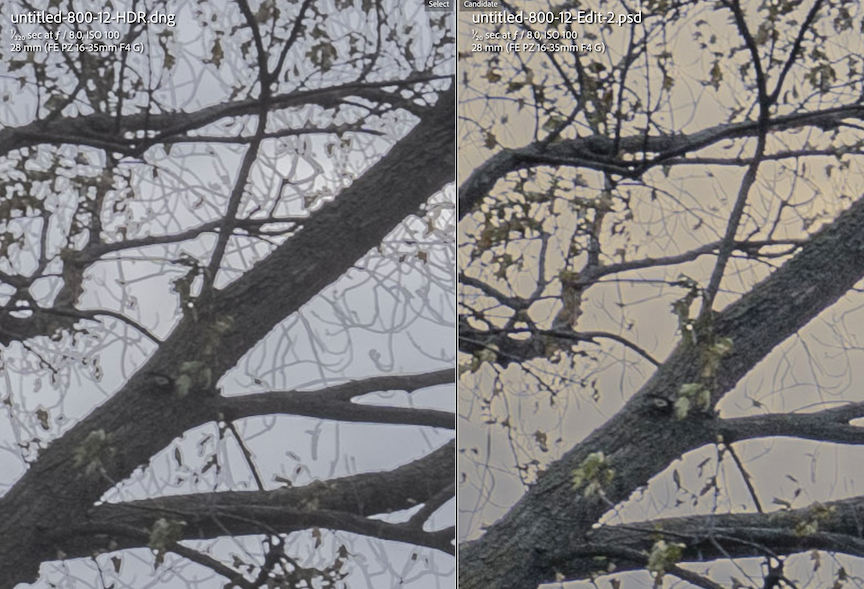
Even more noticeable when we zoom in to 800%.
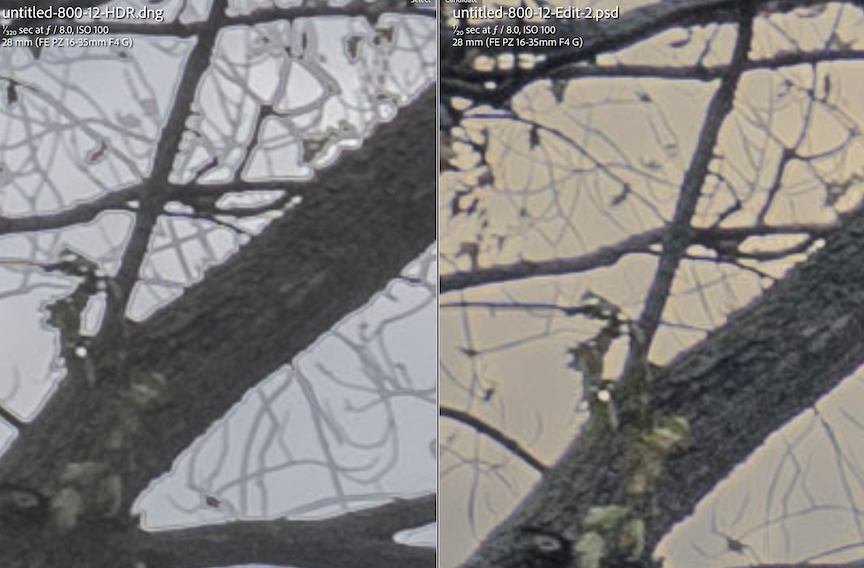
Another portion of the photo. The Photoshop version on the right looks superior.
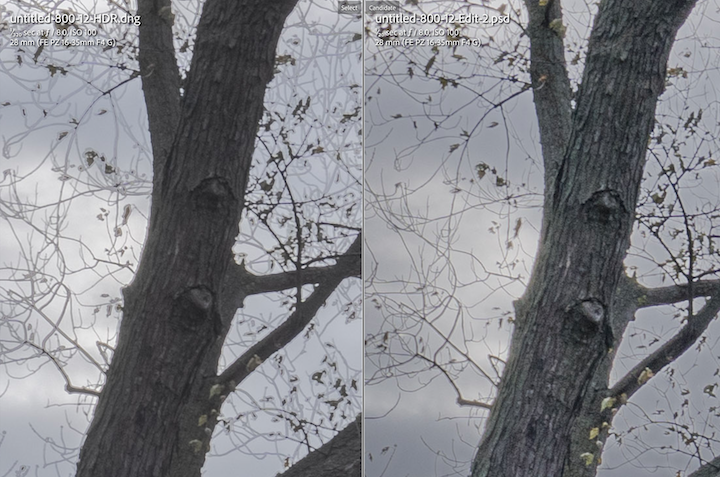
So while HDR is a great (quick/easy) tool in Lightroom it’s not fullproof. I usually try HDR first and if it begins looking wonky, I dive into photoshop to exposure blend. More work, but in tough conditions better results.
Now let’s compare the Iphone shot to our Photoshop masterpiece. Note: The Iphone 13Pro on left has a taller aspect ratio. For a quick phone shot (one frame in RAW mode, processed using Apple ProRaw profile in Lightroom) it’s fricken magnificent. The Sony shot on the right looks a little more natural, less contrasty, but both photos are pretty good! In fact, the Apple captured a little more of the color in the sky.
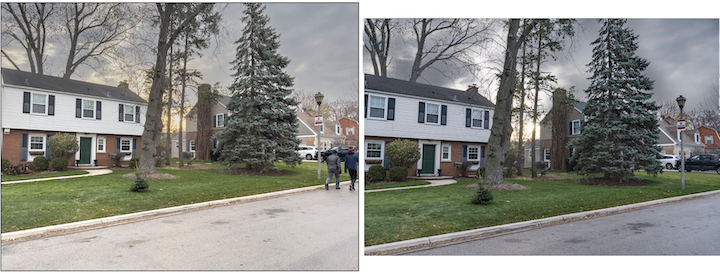
Of course that’s easily corrected with a small tweak in Photoshop. The Sony high res files allow me to tweak and adjust the sky in a way that the Apple HDR photo can’t match.
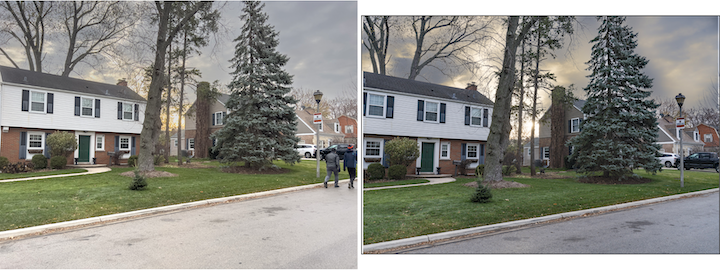
Let’s take a closer look at our IPhone shot at 300%. Nuts! We have that funny ghosting again. The IPhones Apple ProRaw IA algorithym has combined several shots and applied HDR processing. Same problem we had with our Lightroom HDR.
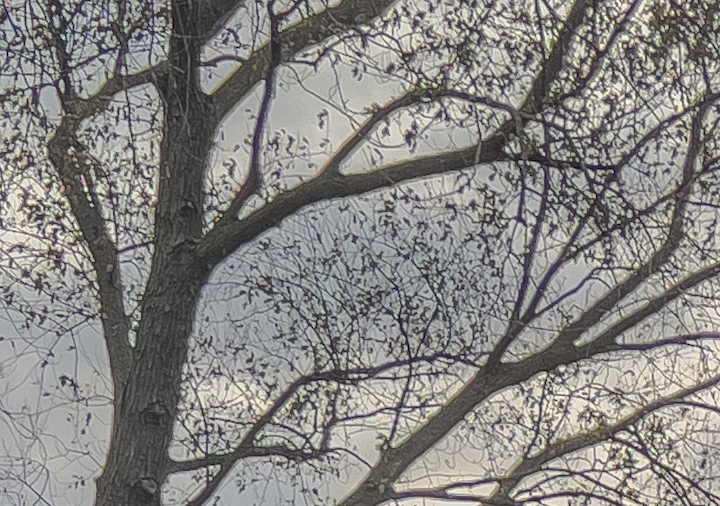
The Photoshop exposure blend is super clean. Great detail, no ghosting.
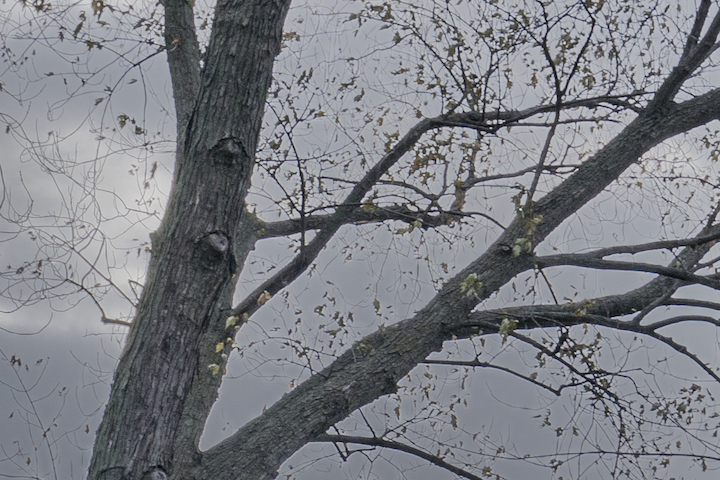
Conclusion: The Iphone does a terrific job and can produce professional looking work (especially the new IPhone 14 Pro with the 48 MP sensor vs the 13’s 12MP). That said, a top end mirrorless camera w exposure blending is probably the way to go under extreme lighting conditions when you plan to publish your work. Otherwise your phone is pretty darn good for social media posts and such.
PS. Want to know the best way to post process your IPhone photos? Click here: https://snitzerphotography.com/education/apple-proraw-best-for-iphone-photos-lightroom-editing/
Apple ProRaw best for IPhone photos? Lightroom editing?
Love taking pics with your iPhone? You have several options which produce varying degrees of image quality.
- By default, your phone takes Jpeg photos. These are great for amateur shooters (also sport small file sizes/about 2-3 MBs).
- For serious photographers there are better options that take RAW images. RAW images have a wider dynamic range (for capturing sunsets, sunrises & difficult lighting) and more adjustability to modify/edit the image in post-processing programs (Lightroom being my favorite). The only downside is they produce much larger files. Therefore, they’re good only for important shots you really want to keep!
- Apple’s new ProRaw format (30 MBs iPhone 13 Pro/70MB iPhone 14 Pro*)
- Third-party apps that also take raw images (10/20 MBs iPhone Pro13/14) with your iPhone (Pro Camera being one of the best)?
How do these RAW apps compare? Let’s find out by taking some photos in difficult light (wide dynamic range, the room is quite dark whereas the exterior views through the windows are very bright) with three options:
- Apple ProRaw image
- Third Party Raw image using the Pro Camera Ap.
- Three bracketed shots were taken in Pro Camera (2 stops apart) & processed using Lightroom’s HDR software.
Below left is the single Third Party Raw Image and right is the HDR merged version. Both look quite similar. The HDR processing hasn’t improved the image much.
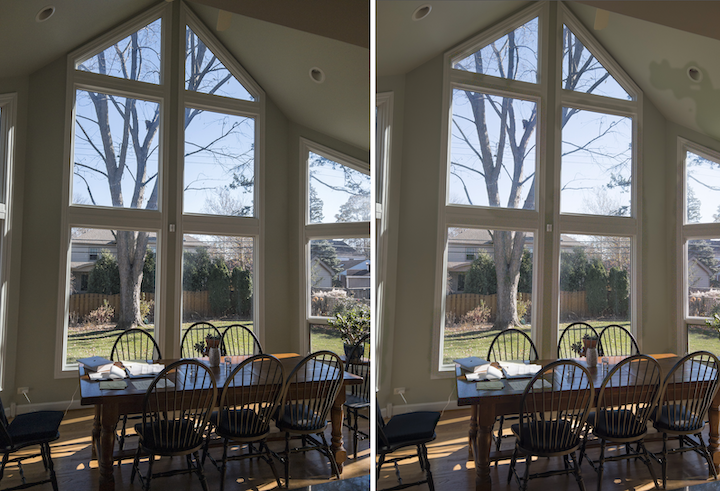
Below left is the Apple ProRaw image and on the right the HDR finished product from Pro Camera. They look also pretty similar when you’re zoomed out.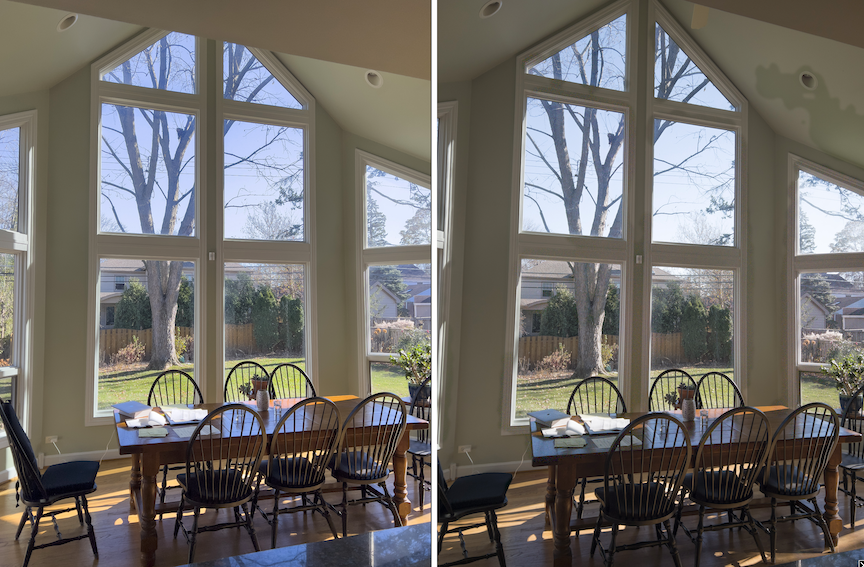
But zoomed in at 300% tells another story! The HDR ProCamera image (below) has tons of noise! See all the colored dots inside the green column?
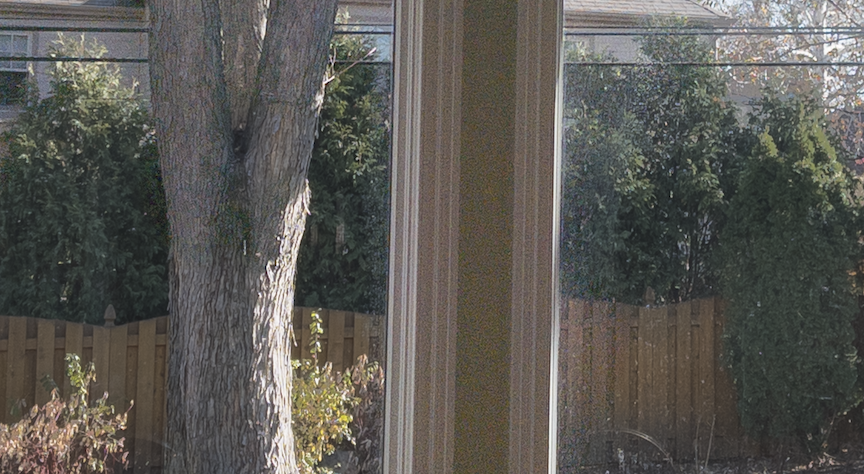
The Apple ProRaw version below is much sharper and practically noiseless. Much better!
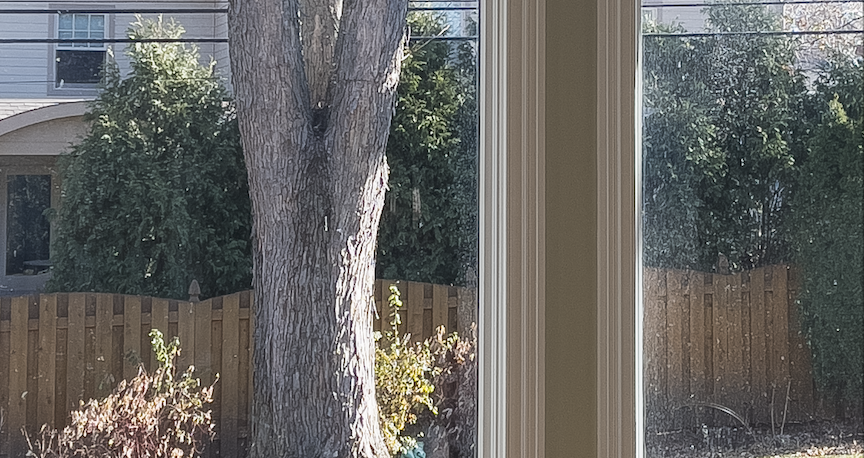
Likewise, in the dark areas of the photo, the Pro Camera isn’t very sharp and has lots of noisy artifacts in the dark areas. Check out the chairs.

Not so with Apple ProRaw.

Some thoughts on optimal work flow:
- As mentioned before, using Apple ProRaw produces large files. Use Apple ProRaw only for IMP images you may want to keep.
- IMP note: The new Apple 14 Pro has a whopping 48MP sensor which produces amazing resolution compared to the 12MB that’s on the IPhone 12Pro & 13Pro, plus superior color rendition. The Apple ProRaw images from this phone will be approx 70MB. Can eat up memory quickly if you don’t delete your “duds”.
- The Apple ProRaw file is hybrid Raw file. If the the scene being photographed has a great deal of dynamic range, the IPhone will automatically take multiple bracketed shots and combine into one HDR image.
- How to turn on Apple ProRaw on your IPhone 12, 13 or 14. Earlier versions don’t allow. Click link for instructions. https://www.youtube.com/shorts/gFDgUC1mah4
- For Lightroom users, when you process the Apple ProRaw file into Lightroom remember to select the Apple ProRaw color option in the Basic menu section. Your image will look much much better.
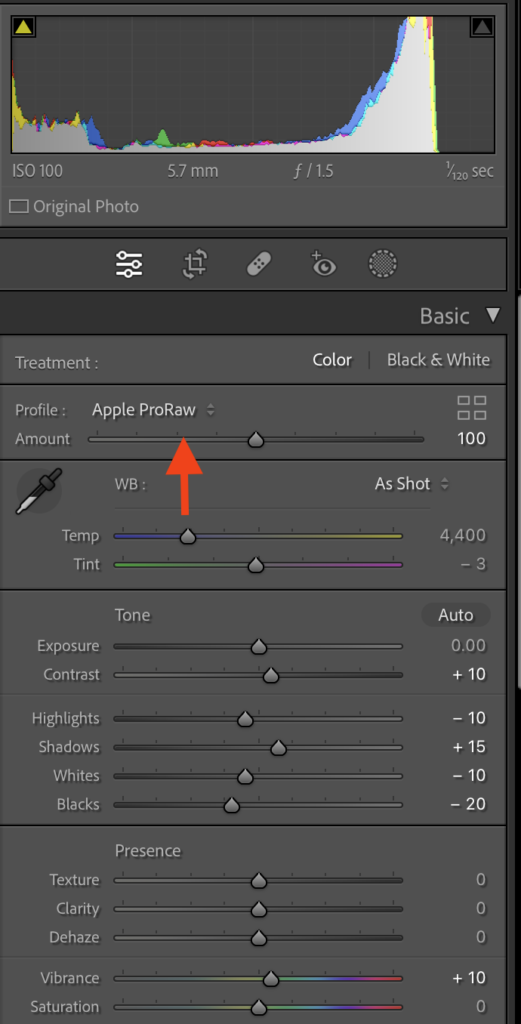
Final thought. How does the Apple IPhone 14 Pro stack up against the Samsung Galaxy S22 Ultra or Pixel 7 Pro? Below is a great overview. Bottom line. If you’re a muggle and don’t shoot in Raw model the S22 is a great camera. On the other hand, for serious photographers, the Apple product using ProRaw software is clearly the winner. Personally, I’ve used both Android and Apple devices and prefer the latter.
Olympus vs Sony: Lighter? Better?
OMG, the Olympus camera is so fricken light! A game changer! Right? Err, not exactly.
The Olympus OM 1 (their flagship) outfitted with the pro 12-100mm F4 lens (4.59″ long) weighs a total of 2.5 lbs. The Sony A7Rr V paired with a Sony 24-105mm lens (4.46″ long) weighs 2.9 lbs.
Both brands generally weigh the same and are similarly compact.
Do they perform the same?
- Sony provides 15 stops of dynamic range (DR) and can recover approx five stops of underexposed content. The Olympus has only 12.7 stops of dynamic range and 2.5 of recovery. The DR of the Sony is four times that of the Olympus (each stop doubles the range).
- Sony delivers over three times the resolution. 62 MP vs. 20MP. Sharper photos, easier to crop, blow up large.
- Sony has vastly superior low-light performance (given its full-frame sensor) and color rendition.
Cost comparison:
- Olympus OM-1 $2,200, 12-100mm F4 lens $1,200
- Sony A7R V $3,900, Sony A7 IV $2,500, 24-105mm F4 lens $1,300
Note: If the Sony A7R V is too expensive for your tastes, the Sony A7 IV (33MP) is a great lower-cost choice.
Ozarks vs Smokies for fall color?
About 700 miles separate the Ozark and Smoky Mountains. Both are spectacular places to leaf peep, bike and hike. Two differences:
- The Smokies are a little more vertical & perhaps contain a slight edge on iconic trails/views.
- Smoky Mntn NP is the most visited park in the US! It’s more crowded. Don’t even think about staying in the popular park destinations of Pigeon Forge or Gatlinburg. They’re grossly, overbuilt resort towns. Townsend, Tn, is the place to be (quiet, gorgeous).
My time in the Ozarks centered around Buffalo River River NP. The park was the first national river to be designated by the Park Service and flows for over 135 miles. With that extended shoreline the possibilities seem endless.
The river is also home to a sh-t ton of spider webs. They literally glow when warmed by the morning sun.
The cold fall nights and humid air allow for fog to frequently roll in each morning. Makes for some moody photog ops!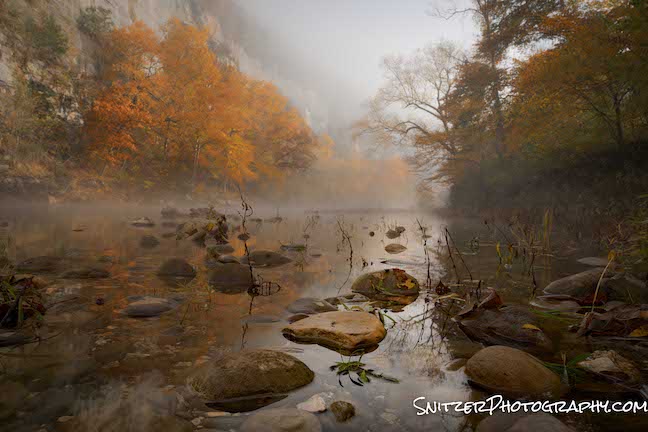
My Drone provided the means to capture the fog from above.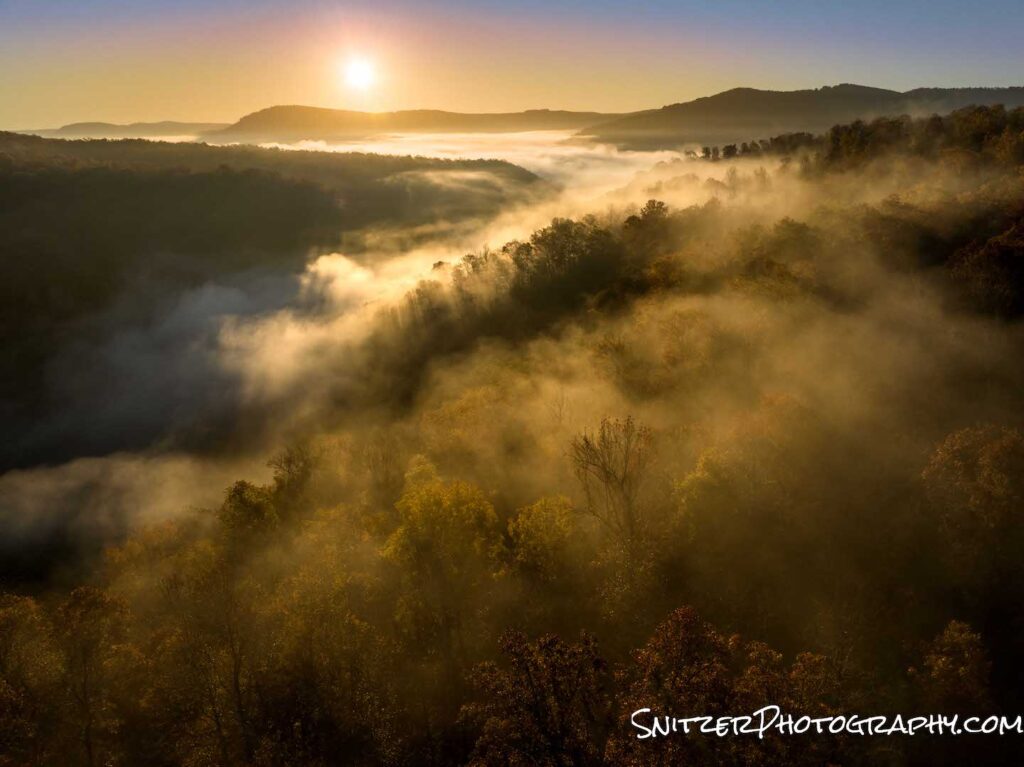
There are also a host of great hikes just outside the park. Pictured below is your fearless leader doing a self portrait atop Whitaker Point. Yep, that red backpack is my trusty camera bag.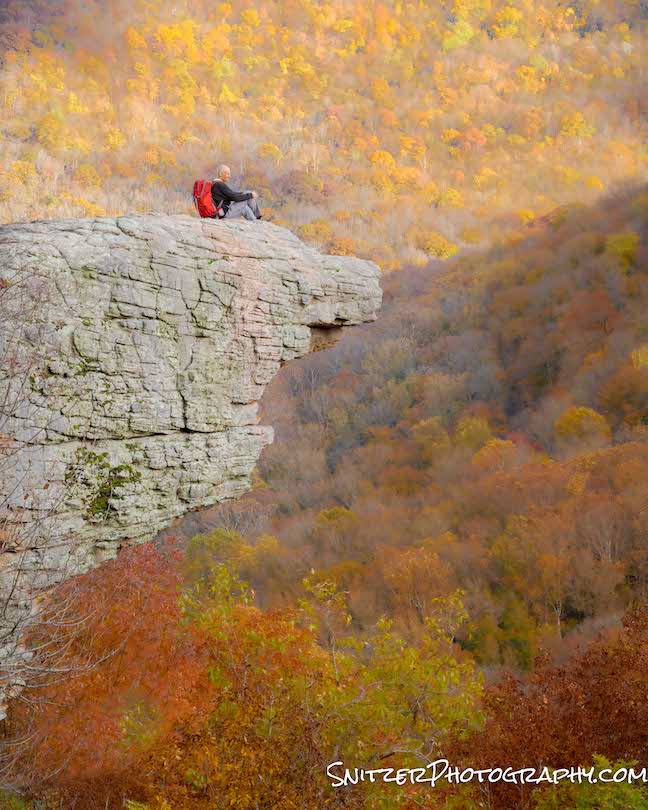
After several days exploring the Ozarks, I started the 10 hour drive to the Smokies, stopping along the way to hike out to Machine Falls, just outside of Tullahoma, Tn. Yep, out in the boonies. Zero crowds!
Drone shot above a nearby lake. The white cottonballs in the blue water are actually the sky being reflected. Wooo!
Day one in the Smokies and I’m treated once again to fog blanketing the valley & beams of light breaking through! 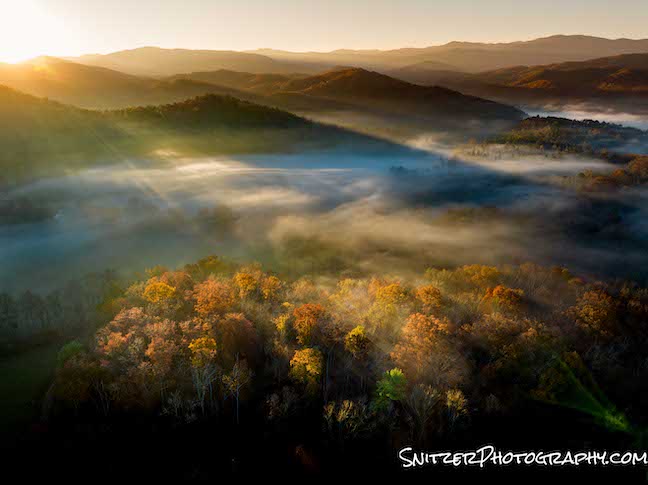
The area is also full great rivers to explore. BTW, the spiral brown formation in the lower right section of the photo actually consists of leafs stuck in a whirlpool. I took a long 10 second exposure which blurred those bad boys.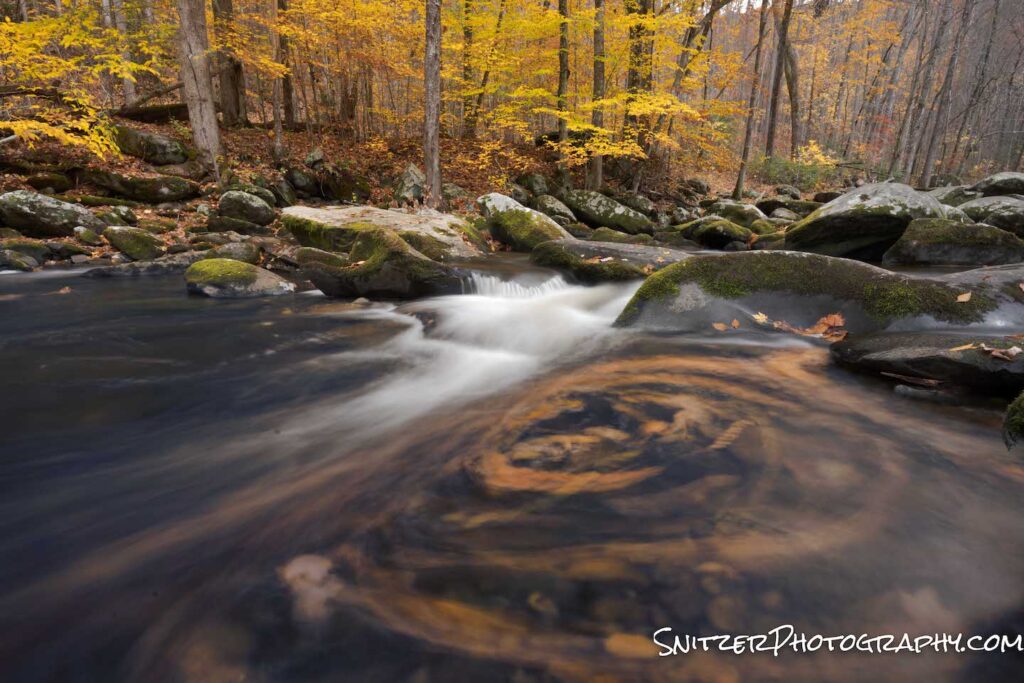
Lots more fun photos to see. Click the link: Click for more!
Your sunrises/sunsets stink? I can fix that! HDR Ninja to the rescue.
Frustrated by HDR lighting? The sky looks incredible in person but your photos suck? Don’t worry, read this and you’ll never miss a big shot again?
The camera vs your eyes. We can see 20 stops of dynamic range( DR). DR meaning the difference between the lightest and darkest parts of an image. Ergo you can detect something 500,000 times brighter than something else. Cameras can’t do that (at least without a few tricks).
Low-hanging fruit:
- Shoot in RAW. This provides 3 more stops than a typical JPEG image. Note: each stop represents of doubling of DR (exponential function. 3 stops means 8 times the range)!
- Lower your ISO. For example, turning ISO down from 800 to 100 provides a whooping 2-3 stops of additional DR depending on the camera.
Camera brands do matter.
- Most Nikon, Sony and Medium format cameras (Hasselblad X2D, Fuji GFX 100) currently offer 15 stops of DR. They can also recover almost five stops of under-exposed data (ISO invariance), meaning even if you underexpose, you can save in post-processing.
- Canons, on the other hand, generally offer only about 12 stops (except the 5d Mk IV & R6 at 13 and their R5 and R3 at 15). BUMMER! Except for the latter two cameras, Canons can only recover about 2.5 stops of under-exposed data.
- Olympus? Not much better; their current mirrorless model offer about 12.8 stops and 2.5 stops of ISO invariance. (Source DXO Mark)
How ISO invariance REALLY works.
The first image is taken at an iso of 3,200.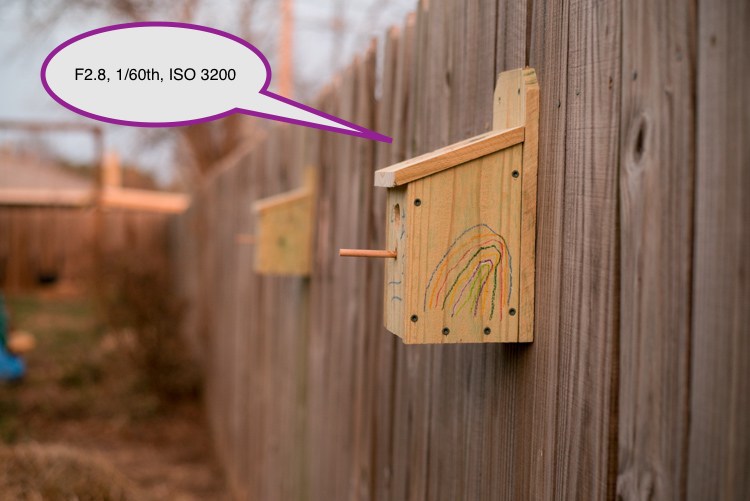
We under expose (ISO 100) by 5 stops and it’s practically black.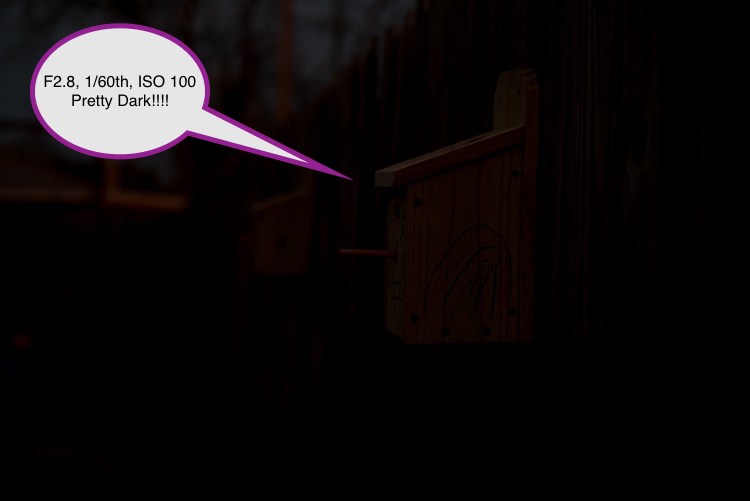
The miracle. We take that underexposed photo into Photoshop and boost the exposure by 5 stops. Image fixed! Sharp, no noise or loss of detail.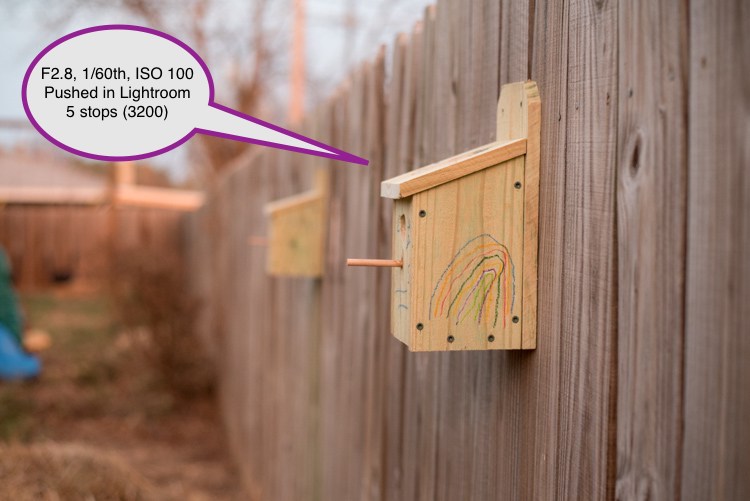
One thing to remember: Better to underexpose, NEVER overexpose (even 1 stop renders your image area white with no chance of recovery).
How to get the exposure right:
- Shoot in manual made. Use your histogram and highlight warning indicator. Turn up your exposure till you first see the highlight warning come on. Note: Your camera’s histogram is reading a Jpeg image. The RAW image you’ll be processing will have 1.5 additional stops of higher range. Meaning you can turn up the exposure 1.5 stops after you see the warning come on.

- For red/orange skies be careful. Your black & white histogram and warning indicator will typically not show clipping of your red channel. Make sure to watch this (using your red, blue green histogram) and reduce your exposure if the red channel is pushing up against it’s upper limit.
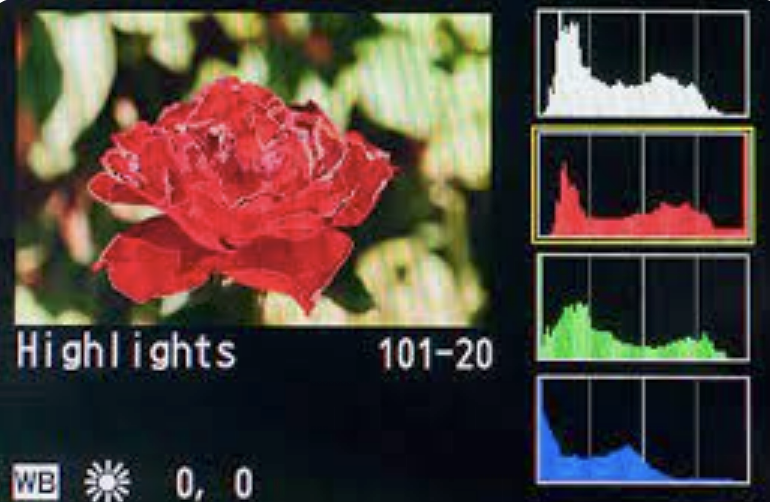
Bring back highlights in post: Ex.
First photo is set to maximize exposure without losing the bright elements of the sky.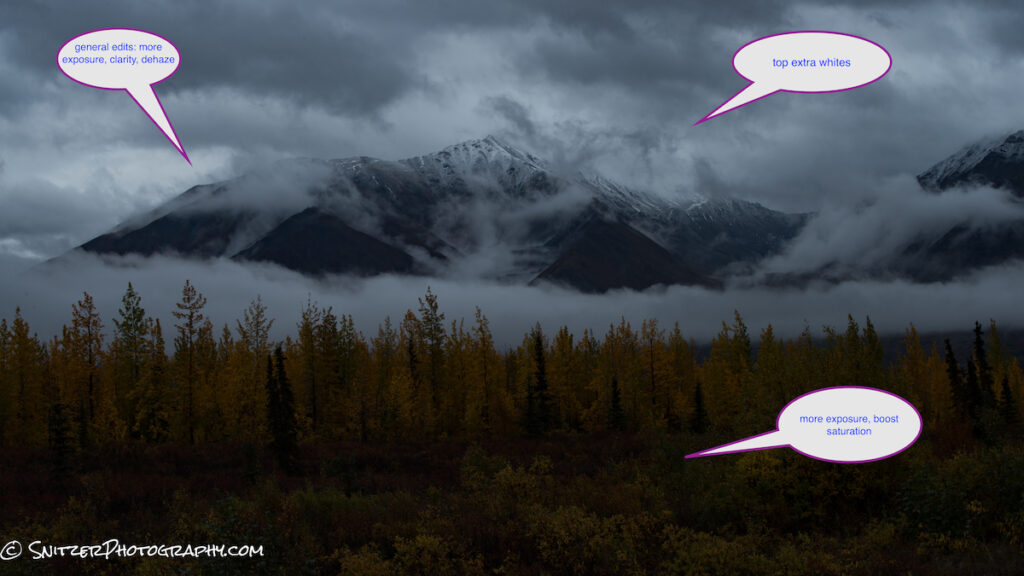
Then I use the “shadows” slider and a selective brush to add exposure to the foreground area and recover under exposed areas. Mission accomplished.
What if I can’t get the exposure right in one shot? Occasionally (a super bright sky) you will shoot at the optimal exposure and still see your histogram slammed up against the left side. That means there is additional data you’re losing in the dark areas. You have three basic options to get this data back.
Old School (Grads): Essentially a tinted windshield for your camera. These rectangular filters (graduated neutral density-Grads) slid up/down on a holder that screws onto your lens. You adjust the darkened portion of the filter to line up with the horizon of your shot.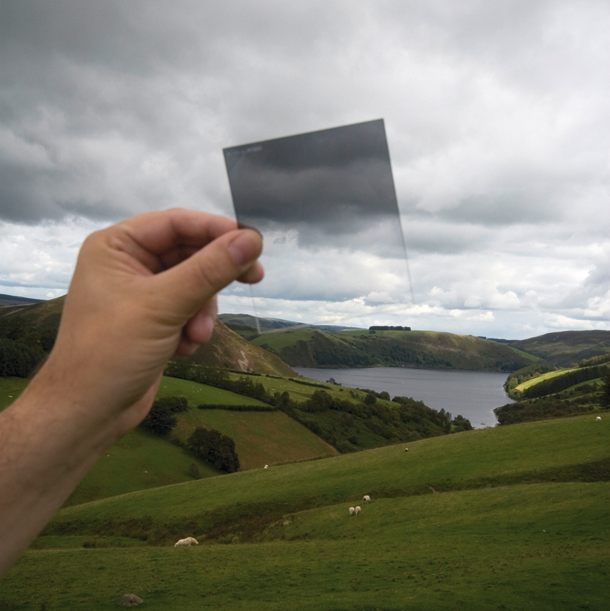
Pictured left no grad, pictured right with grad.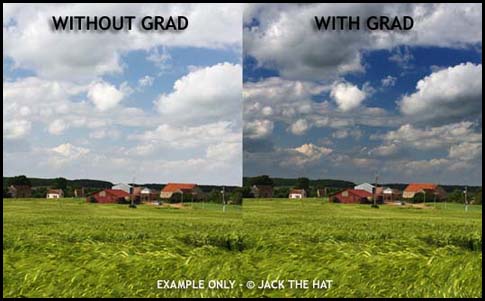
How you set up on your camera.
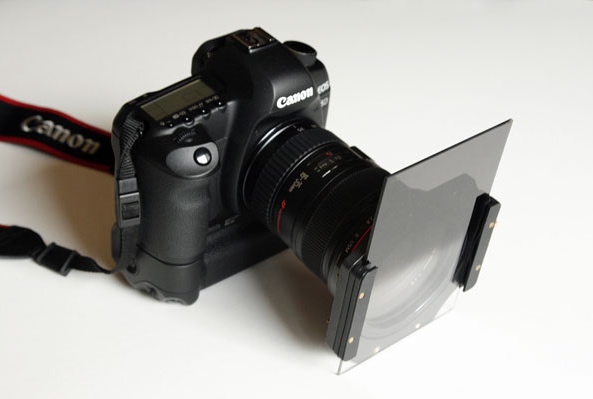
- Filters come in various strengths. I own a 2 and 3 stop Grad.
- They have either soft or hard transition areas(dark to clear). I usually use a hard filter.
- They can be combined in the holder with a solid grad (6 or 10 stop) to create very long exposures (good for coastal shots).
- Cost: Lots of good manufs (Lee being a popular choice). Cost for 2 Grads, 1 solid ND, holder and 2 lense attachment rings is about $500-600. Note: Stay away from Cokin (cheap but with a terrible color cast).
Photoshop exposure blending:
- Take one shot exposed for the sky. Take a second one exposed for the dark foreground.
- Combine using layer masks in Photoshop. https://www.youtube.com/watch?v=msIOb7Sg_Gc
HDR software: Take between 3 and 5 (in extreme DR situations) photos bracketing 2 stops apart. Photo below 2 stops under exposed. Sky is perfect, but the foreground is much too dark.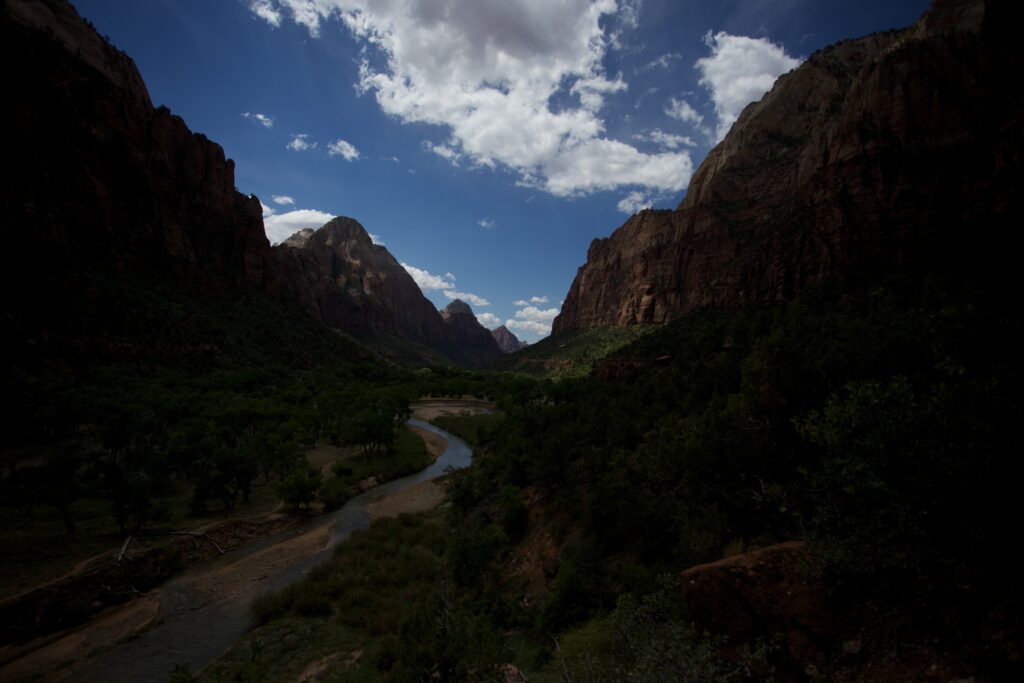
Next shot neutral exposure. Sky is a bit overexposed, foregrounds still too dark.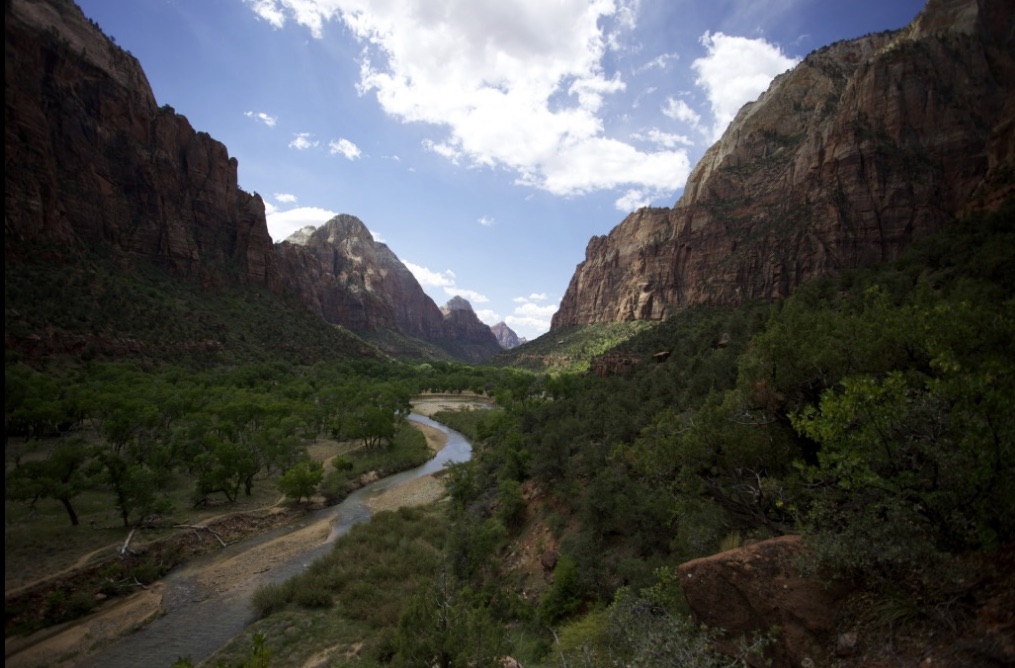
Final shot 2 stops over exposed. Sky completely blown out, foreground perfect!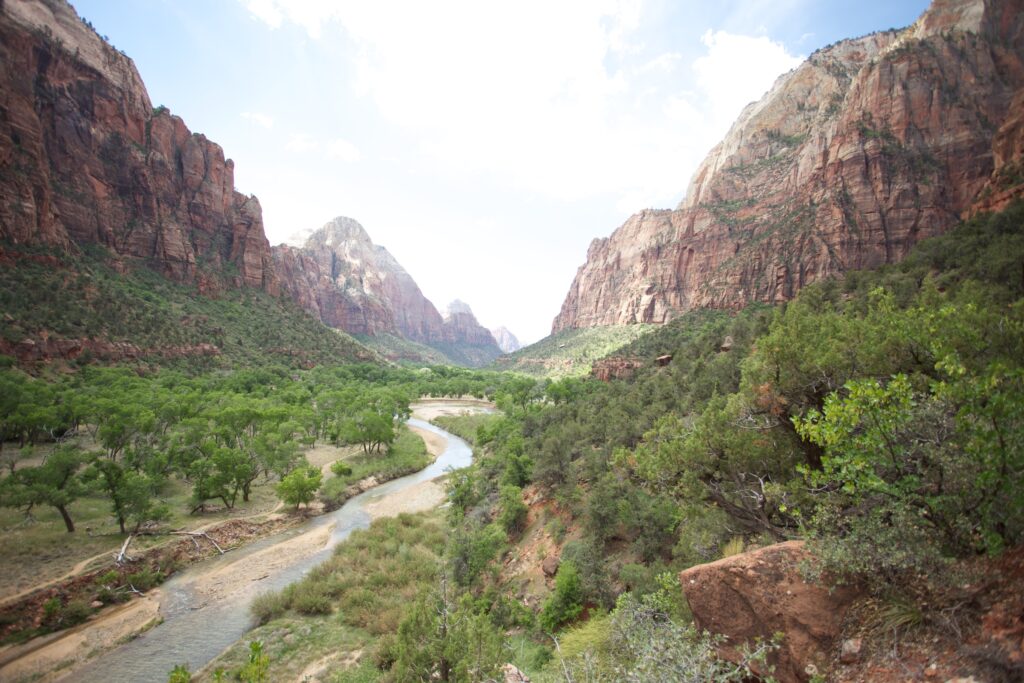
Then combine using HDR software to produce an image with huge DR! Many choices available (Photomatix, Aurora HDR). They’re all similar in quality. The best choice ironically is free, Lightroom(use auto-align feature, turn off auto settings). It keeps the resulting image in RAW format (the others return an inferior TIFF image). You’ll need to use clarity, dehaze, clarity black point and other sliders to tweak the final image.
Lightroom HDR photo. Needs additional tweaking.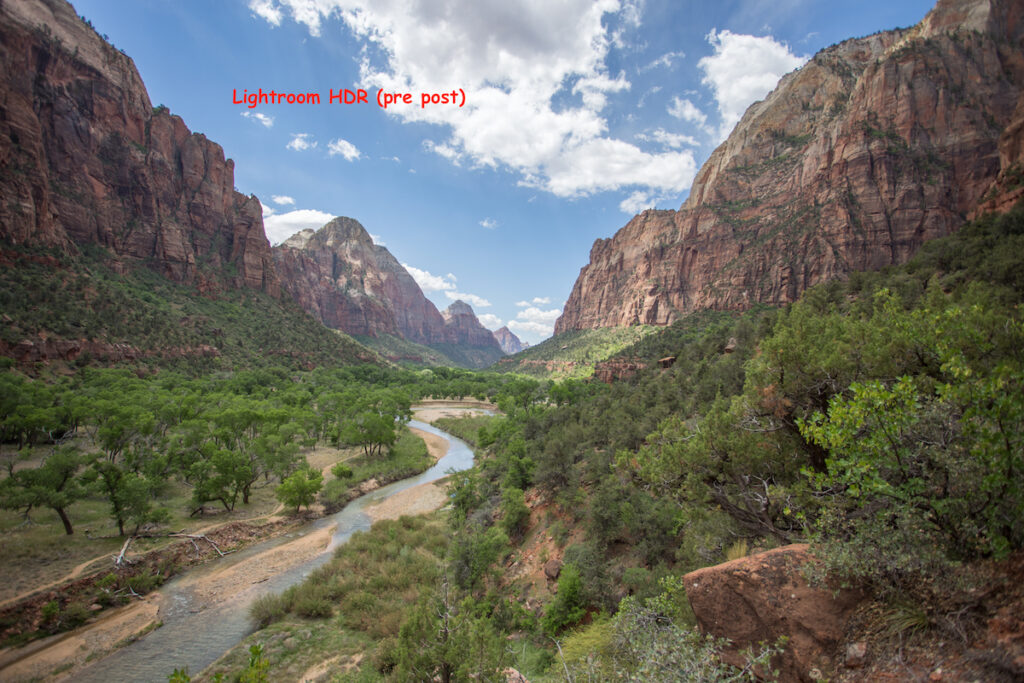
After edits. looking awesome!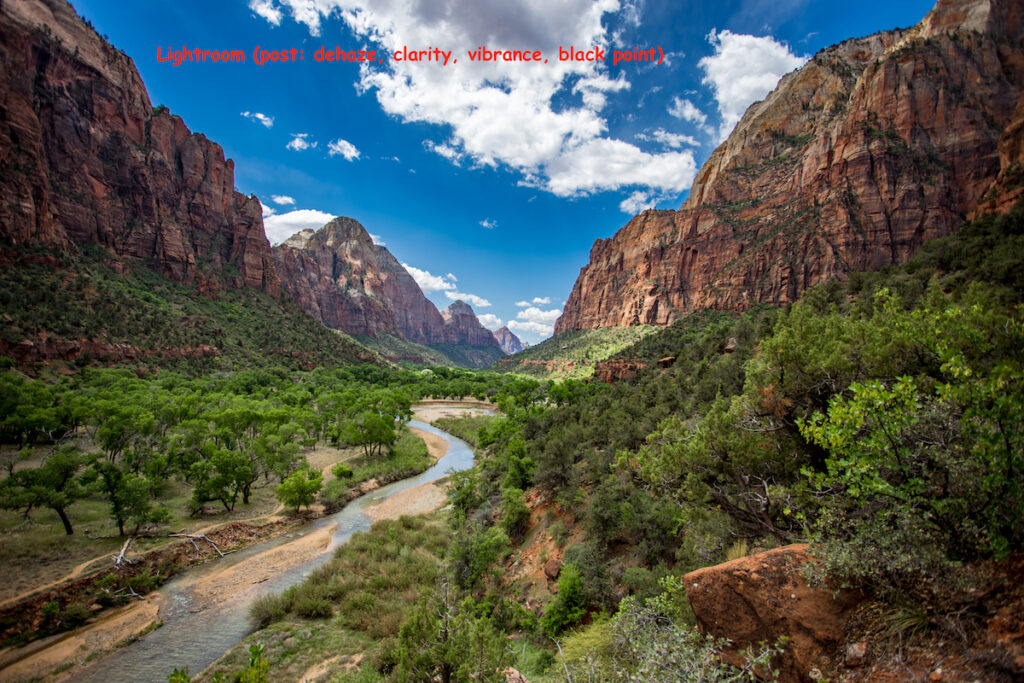
Which method best?
- Grads require almost no work in post processing. They are expensive however, a pain to set up and don’t work well with complex site lines (like mountains). Great option for beginners who aren’t yet comfortable behind a computer.
- HDR software. Works great in most situations, except brilliantly colored sunrises/sunsets (tends to get wonky look skies).
- Exposure blending in Photoshop. The only way to go for red skies. Also a great option for coastal shots with exploding waves. Take on shot for the sky another to capture the perfect wave explding over a rock.
Now go out there and get some bomber images! Wooooooo.
Fall foliage in the Rockies!
People frequently ask me “how” do I get “those shots.” Some inside scoop, specifically for leaf peeping, follows.
Basically, to get good fall color, you first gotta get there “at the right time.” Unfortunately, in the Rockies, it’s almost impossible to predict when the fall color will explode. You’re typically looking for that crazy 7-day period when the lights go “on.”
Unfortunately, the variability of summer rain, fall temps, and big wind storms (that can strip the trees bare) all make predicting pretty much impossible. Meaning I plan very last minute and start driving in when it’s “just right”.
So getting there is half the battle. The other half is catching great light and even better, an overnight snowstorm before the leaves disappear. You want just the right amount of clouds to catch the early morning rays or sunset. Clear blue skies suck!
Every once in a while, I get lucky. Got up early to catch this shot after it snowed all nite. Was this view visible from the road? Nope. That’s where the drone comes in.
Drones have become a leading edge tool to grab unique shots from vantage points previously requiring a helicopter. Kind of the new frontier for adventure photography.
Some other shots taken in flight. BTW, I use a DJI Mavic 3 Cine as my UFO.
That’s not to say, I’m not willing to go low. This photo was taken about 2 inches off the ground. For our photobugs out there, it’s actually two images blending together. One focused in on the nearby leaves, the other focused on the further away trees. I used a small aperture (F22) to create the Sunstar.
I used the same technique below (focus stacking) to get the nearby leaves in sharp focus (shot 1) and then focus out long for the mountain (shot 2).
Ok, now for getting rainbows. When I see it raining, but there’s a clear sun sky behind me, I start looking around!
What makes a great woodland shot? Occasionally, you chance upon some very white, large-diameter Aspens with the foreground covered in ferns. Yellow fever!
Let’s not forget the wildlife!
No, not the moose, the Holstein(or whatever). I was standing about 8 ft from that girl. Actually taken with my iPhone. BTW, I was not close to the moose. Don’t have a death wish. Taken with a big telephone lens.
Finally, it doesn’t hurt to be tenacious. I’ve been trying to get a great shot of Mount Crumpet (Rabbit Ears) for years. Some Steamboat buddies, helped me find the right vantage point (thanks to the Clarks!). Finally got all the elements together. Great sky, changing trees & hint of sunlight on the mountain.
Oh, yes…how to get a good photo of a lake? Two things really help. Go when it’s dead still, so the lake becomes a mirror. II: Have a great sky. The sky becomes the main event!
Check out the link below to see the full gallery. https://www.snitzerphotos.com/Other/Galleries/Fall-in-the-west-2022/n-rrc2QX/
Norway: Snitz in the land of the Midnight Sun
“What’s the best location you’ve ever photographed?”. I get asked that a lot! Usually, I look stumped and can’t answer. Now I can; the Western Coast of Norway.
Part of my attraction is the scenery. You have vertical peaks jutting out of an endless supply of lakes. You find yourself driving from one fjord to another, through an amazing system of tunnels as you pass under mountains to successive bomber views. Nuts! Along the way, every 5-10 minutes, you pass a quaint fishing village.
BTW there are zero billboards and practically no stop lights. Just unspoiled postcard views.
But that’s not the most compelling part.
It’s the light! Located very far North (further than most of Alaska) in late summer, it never gets dark. The sun sets around 11 pm and comes up again around 3 am. During that time the sky can stay red for hours. Sunsets and sunrises never seem to end. Magic for a photographer.
And amazing hiking? Try treking up a 2,500-foot mountain at 930pm, arriving as the sun sets and seeing nobody. No crowds! Pretty surreal.
Ok, what’s the catch? Well, it typically rains every 3rd or 4th day. You can get slammed by weather. And as you may have guessed, to take advantage of this great “light” you’re staying up through the Norweigan nights (basically remaining on Central Standard Time). And yes, the food is crazy expensive (however the fish is top-notch).
My trip started in the Village of Senja, a quiet fishing village.

11 pm and families are out enjoying the great color!
A few hours later it’s still red out there, and the tide is out, creating this great river effect. Normally the entire foreground would be underwater.
The tidal action creates these cool lines along the beach.
Taken with a drone over 1,000 feet up. A perspective you seldom see from the road.
Talk about getting a different perspective! Here’s the view atop Mt. Husfjellet. The climb up takes about 90 minutes (& can be pretty muddy after a rain)!
With the frequency of rain and cool lighting it’s pretty common to see rainbows. Lot’s of rapidly changing weather.
Plus a good share of hidden waterfalls.
My family joined me mid trip and we proceeded South to the Lofoten Islands.
Great to see kayakers out exploring the fjords. We spent a half day doing the same!
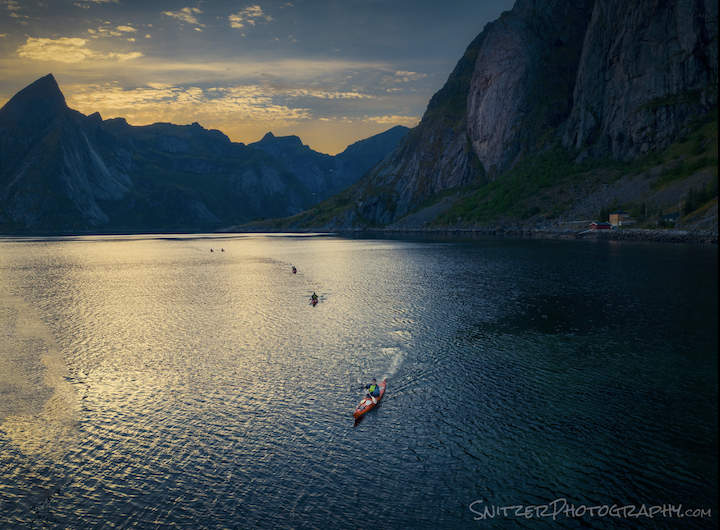
Lots more to see. Click the gallery link. https://www.snitzerphotos.com/Other/Galleries/Norway-2022/n-FX5WwV/
Snitz flies the Mavic 3
New revised post!
The new Mavic III Classic is the more affordable version of the Mavic III (which I own).
A bit of history. It’s been four years since the Mavic II Pro was released. At the time, this drone was priced around $1,300 and could top out at $2,000 with additional batteries, accessories, and a smart controller. In 2020 the company introduced the Mavic Air II, a similar but less expensive drone that started at around $1,000 (since being improved with the Air2s model). Similar photo/video quality range. Ergo a great value. See update at bottom (new DJI Mini 3 Pro)*
So is the Mavic III Classic worth it? Is the latest and greatest worth your hard-earned $? In short, YES!
What I really like about the Mavic 3 Classic.
1. Much better sensor: While the same resolution (20MP) as the Mavic II and Air 2s this drone has a Micro 4/3rds sensor. Ergo the more modern sensor is twice the size. This drastically reduces noise and improves dynamic range (by about 1 stop)*. It’s also much more ISO invariant and produces superior images in low light. In the past, to get clean reproducible images, I’d need to shoot a burst of 5 shots and noise stack*. Now I can get good quality from one image.
2. While the drone’s forward/backward travel speed hasn’t improved, it’s ascending/descending speed has doubled (8meters/sec vs 4 up, 6/3 down).
3. The Mavic 3’s flight time is improved from 31 mins to 46 minutes. This is huge. Normally it takes 5-10 minutes to get my drone in position to photograph (especially if I’m traveling to a remote location). Considering I need to leave 20-25% battery available to return home, the earlier drones usually allowed only 15 minutes of actual shooting time. The Mavic 3 allows almost 30. Twice as much is better! Plus, because I often shoot at altitudes of over 1,000 feet, the faster ascent/descent speeds save precious time.
4. Better range. 10 miles vs 6 with the smart controller. In real-world operations, I typically was able to fly the Mavic II Pro about 2.5 miles away before I’d run out of signal strength. The Mavic 3 realistically stretches that to about 4 miles. As a nature photographer who shoots in faraway places, trying to generate unique compositions, this is a significant advantage.
Bottom line: The Mavic 3 Classic is really geared for Pros or serious amateurs. It’s an expensive but great piece of hardware. For most hobbyists, the Mavic Air IIs continues to be the way to go. Note: The newly released Mavic 3 Classic is essentially the same drone as the previously released Mavic 3 Pro (without the worthless 162mm equiv telephoto lens that shots only in Jpeg and has miserable image quality). It’s literally half the price properly outfitted. The drone, with the fly more kit (extra batteries, charging hub, etc) and bomber smart controller (a must, essentially an Ipad sized screen to control your drone, beats the pants off using your phone) is $2,400.
PS. I’m typically using drones for still photography. The Mavic 3 has a number of video improvements, including superior object following that aren’t discussed here.
*Some of you may notice that the Mavic II Pro was listed as having 14 stops of dynamic range compared to 12.8 for the Mavic 3. What gives? After speaking with DJI’s tech support, they sheepishly admitted that the Mavic II only has 12 stops of range. The previously published specs were in fact wrong. Imagine that!
**Noise stacking is a technique to reduce noise by combining multiple images, typically in Photoshop. https://www.slrlounge.com/remove-reduce-noise-from-your-images/
DJI also recently announced the brandy new Mini 3 Pro. This smaller drone weighs less than 249 grams (making it legal in locals/nations that have a 250gram drone minimum). It’s super small, under $1,000 with all the goodies (smart controller as well) and easy to carry! It also has a 47 min flight time with the premium battery option. So is it a good option for serious photographers?
Err…not really. While they advertise it as having a 48 MP sensor, that’s complete BS. The actual sensor is 12MP (.77 inches) and the 48MP number only refers to their pixel shift mode which basically sucks. The Mavic 3’s sensor is 20MP (1.33 inches) has much lower noise and less chromatic distortion. Plus unlike the Mini which gets blown around in big winds, the Mavic 3 can go out on days that would ground it’s little cousin.
Bottom line: The mini is a fun toy, but not something I’d use to capture any images to keep. The Mavic Air2s is the better choice for the budget minded. Better sensor(20mp/1 inch) , better image quality, beefier & able to handle strong winds. $999 or $1,300 with the “fly more” kit (includes two extra batteries & charging hub). BTW: Avoid the older Air 2(which also has a lame 12mp sensor).
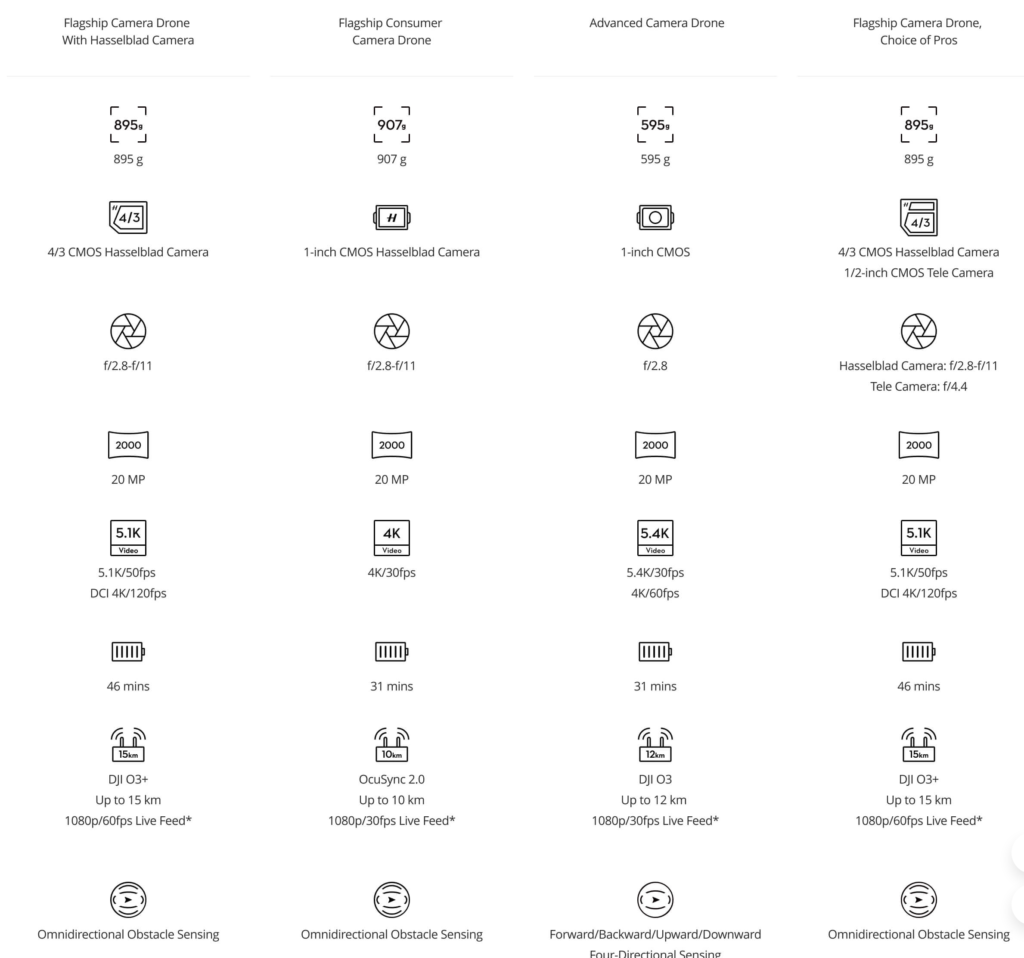
Snitz winter tours America’s Southwest
I’ve never had the chance to photograph some of my favorite Colo Mntn spots covered in snow. Ergo the San Juan Mountains located in Southwest Colo (think Telluride/Crested Butte).
For instance, I’ve shot Mount Sneffeles many times, but getting back there in the winter isn’t easy. Requires a snowcat or a Jeep with some massive tires. Worth the effort!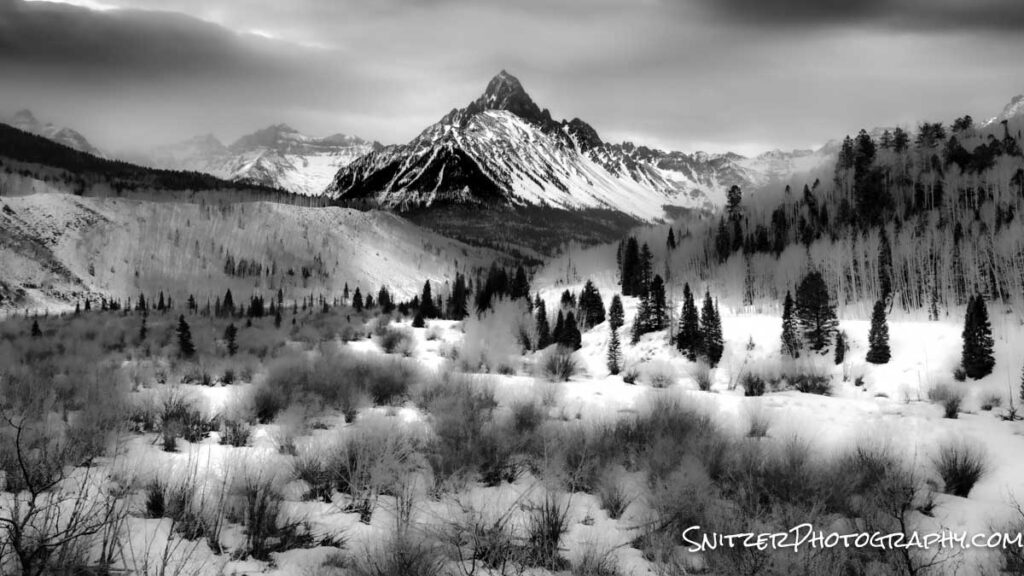
BTW there are more uncharted jeep roads (with about 2ft of untracked snow on them) to explore. The shot below was taken with a drone (about 30ft above the road).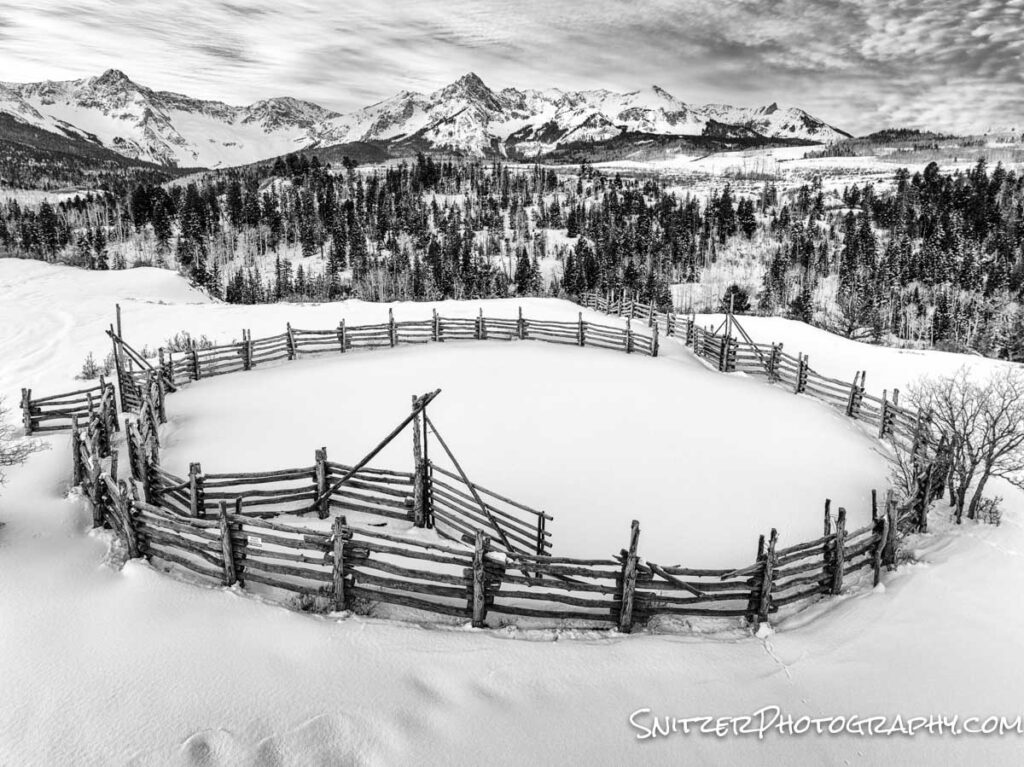
The drone provides a pretty unique perspective when the sun is about to set. Love the shadows!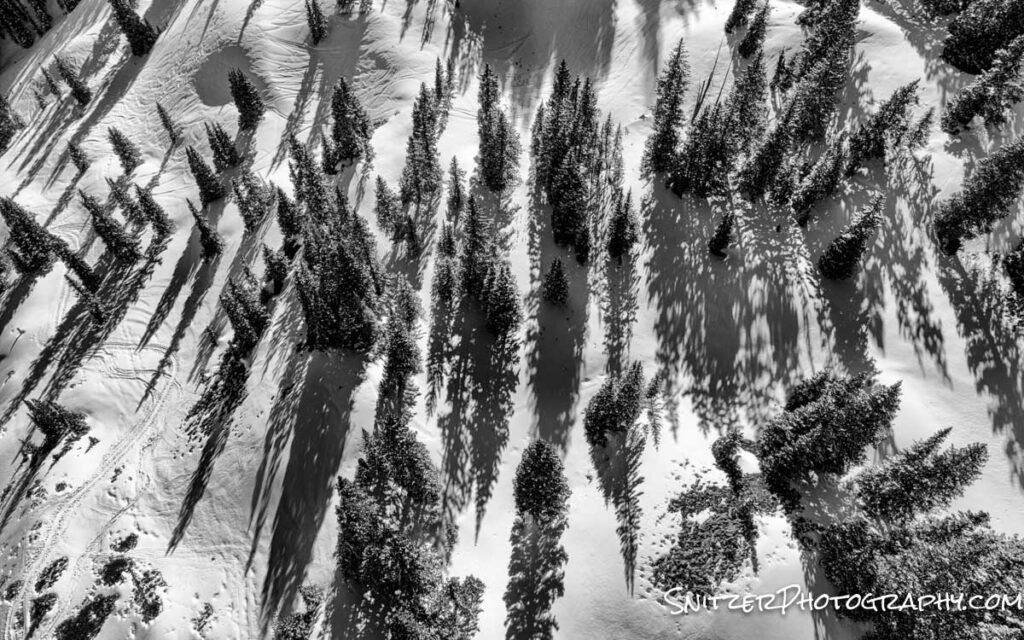
Speaking of sunset, it was full moon time on my trip. Everything lined up just right!
The two shots below were both taken about 35 minutes before sunrise (just outside the town of Ridgeway).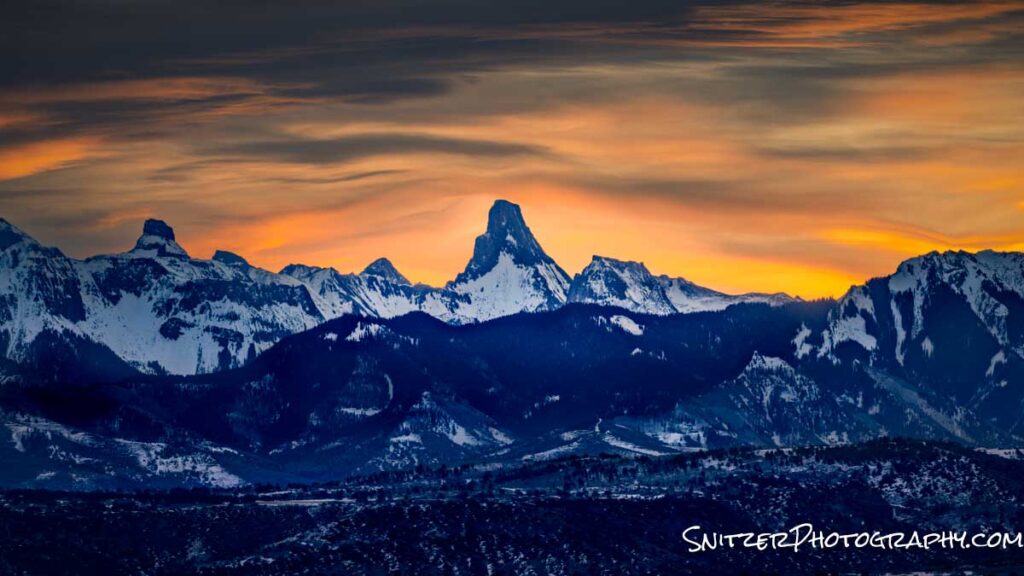
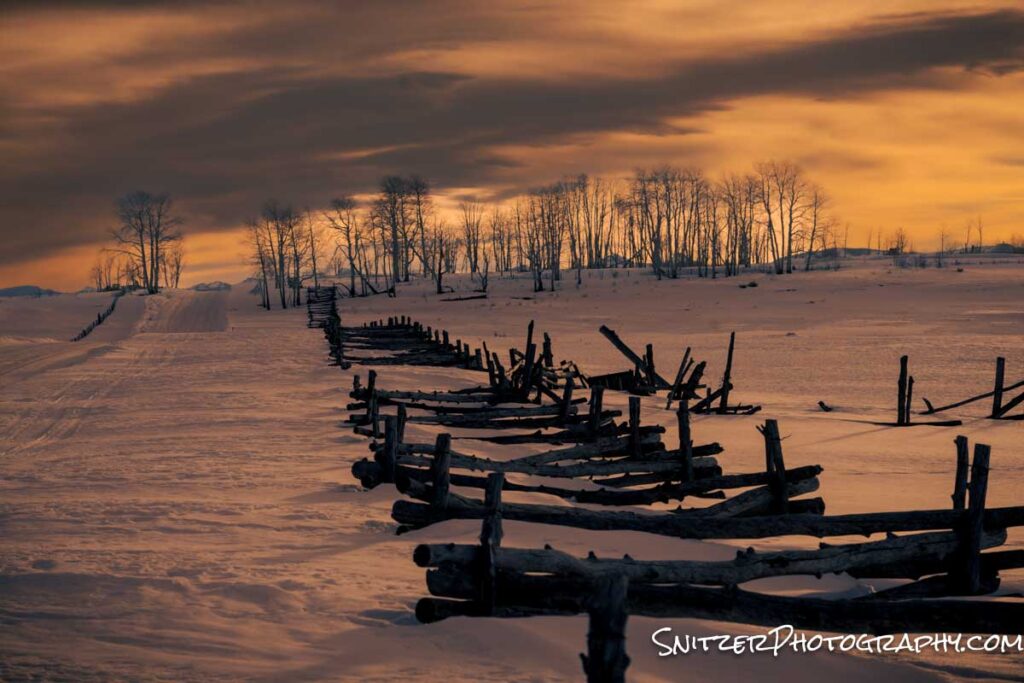
Interesting, how different some iconic views look when covered with the white stuff!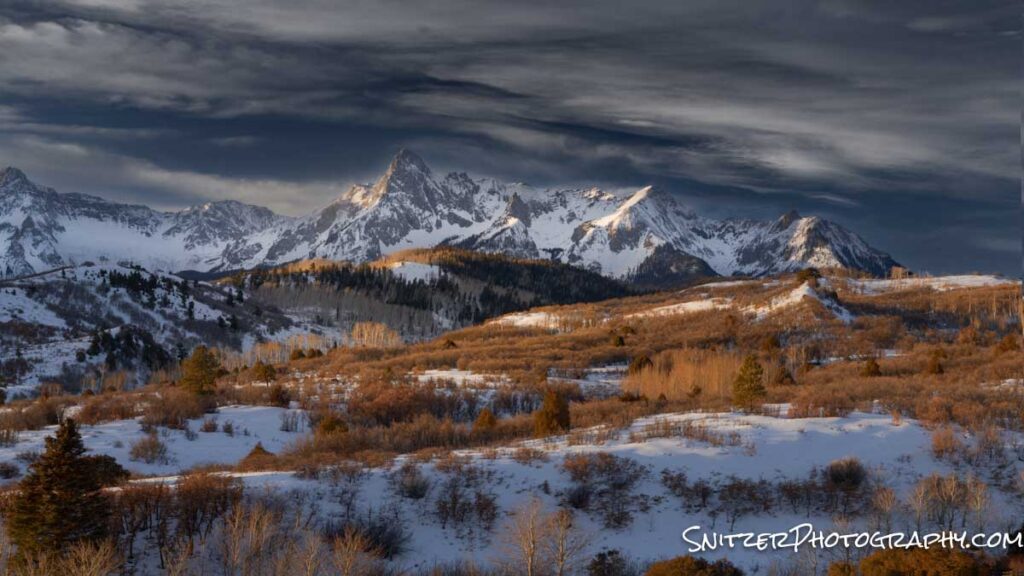
Then there are those crazy (& I do mean crazy) ice climbers. This dude was going up an 800ft high ice flow (just outside of Ouray, Colo). Any fall would be a game-changer (& not for the good).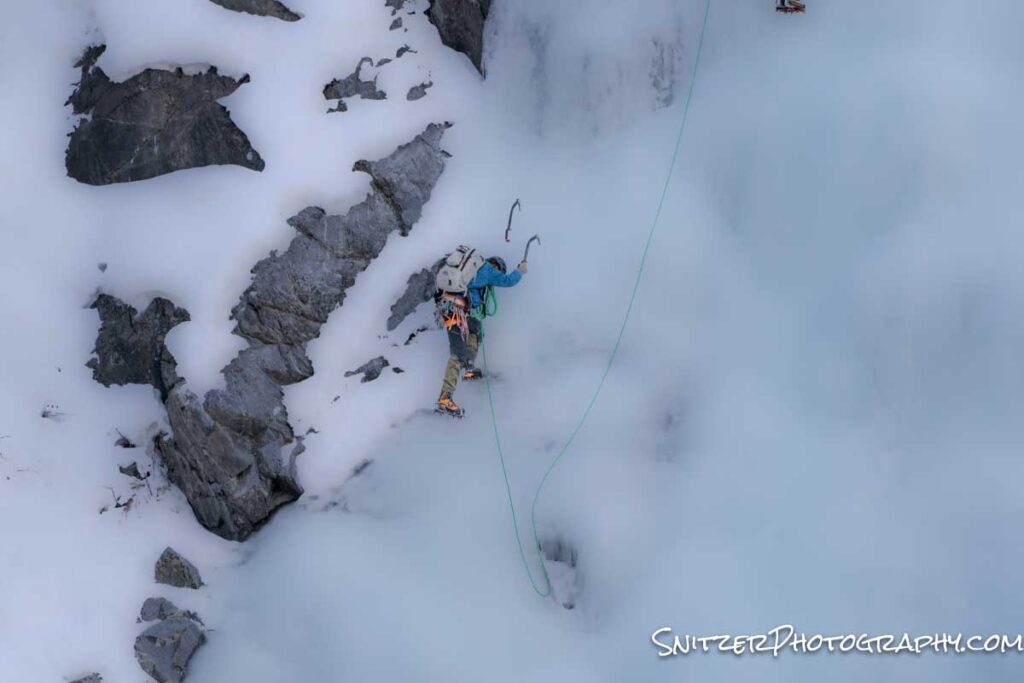
Next stop, the Moab area (which includes Arches and Canyonland NPs).
A previously hidden view I discovered while flying the drone. I had no idea what this plateau looked like till I got approx. 800 ft above the trailhead.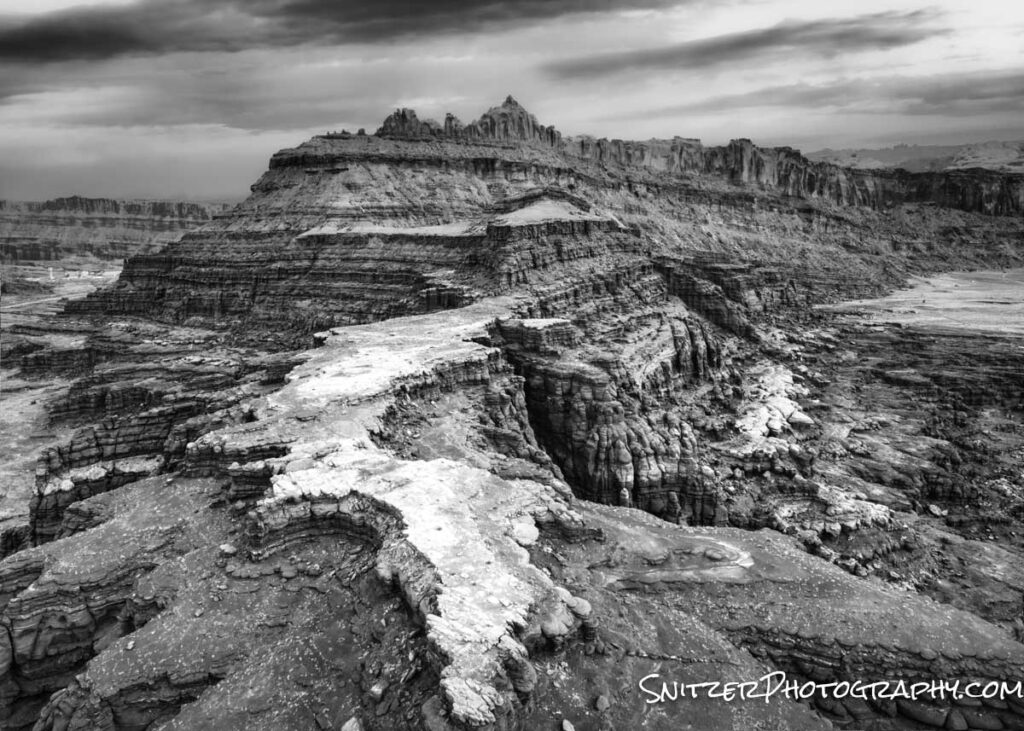
The photo below (Arches NP) looks like it’s taken at a lake. Nope, the image was created by getting down really low and photographing across a 3 x 4ft pond.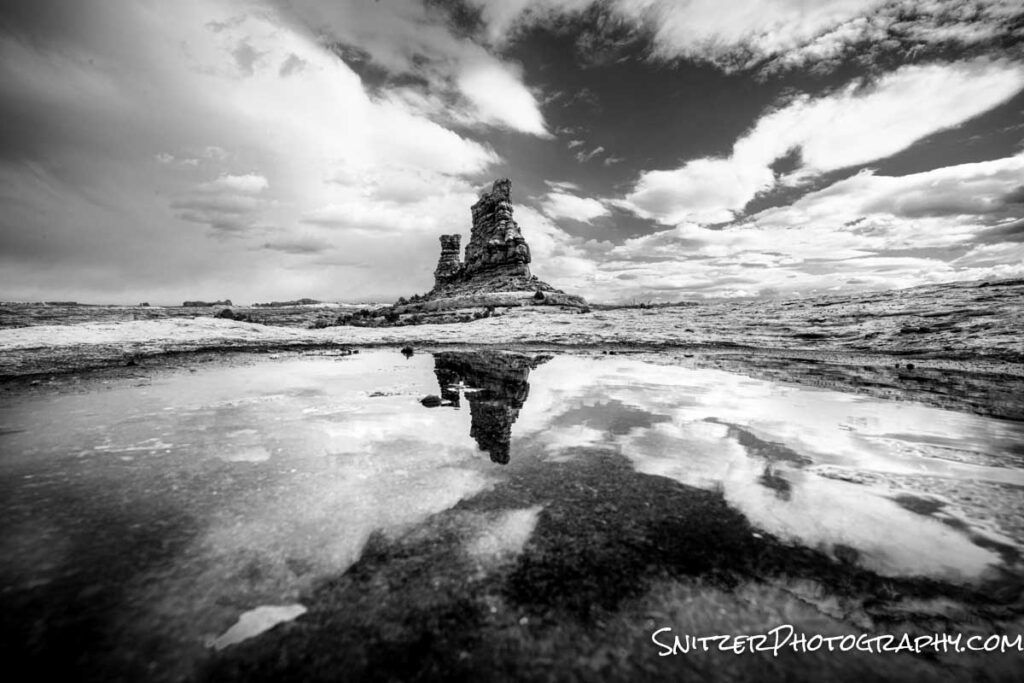
Another bomber reflecting pond.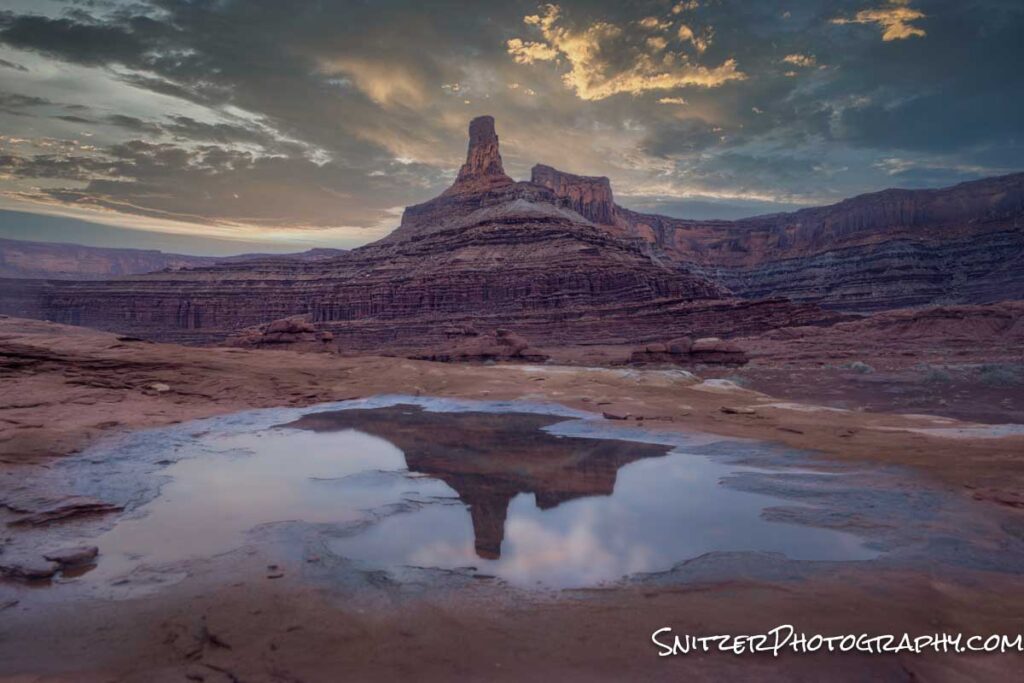
Yes, every so often you can find a waterfall in the desert!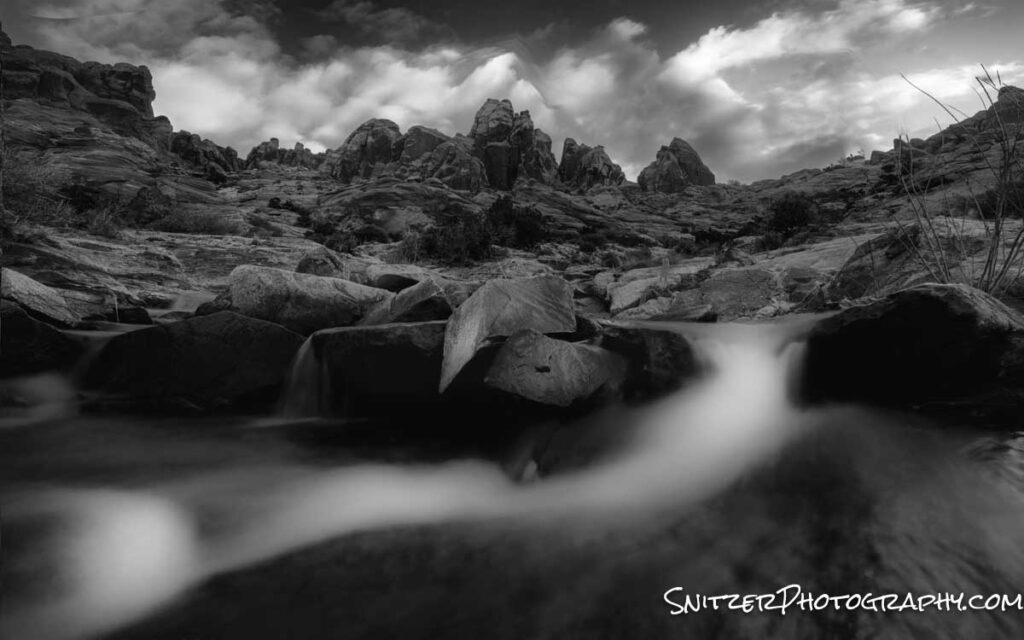
This place is aptly named Goosenecks State Park. Looks even better from above.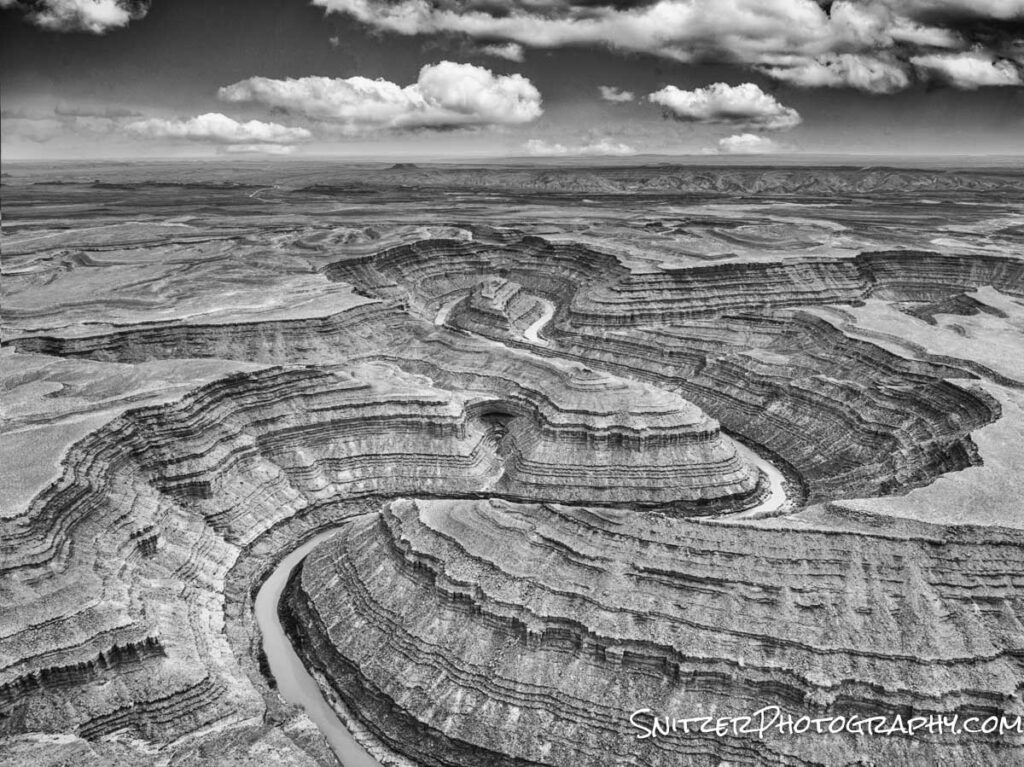
On to Arizona! My exploration focused on two areas, Lost Dutchman State Park and the Kofa National Wildlife Preserve.
This image was taken near my tent at 4 am. The cacti in the foreground are called Cholla (actually jumping Cholla). If you brush up on them, they release their barbed needles. Good luck getting them out. Incredibly nasty plants. I was darn lucky to avoid any accidents!
BTW, for our photo enthusiasts. The photo below was taken by shooting 13 images of the Sky (ISO 8,000, F 2.8, 17 secs) and stacking using Starry Landscaping Stacker Software. The foreground was shot 90 minutes later during twilight. The images were then merged in Photoshop.
The Cholla make great foreground objects and almost glow during sunrise or sunset!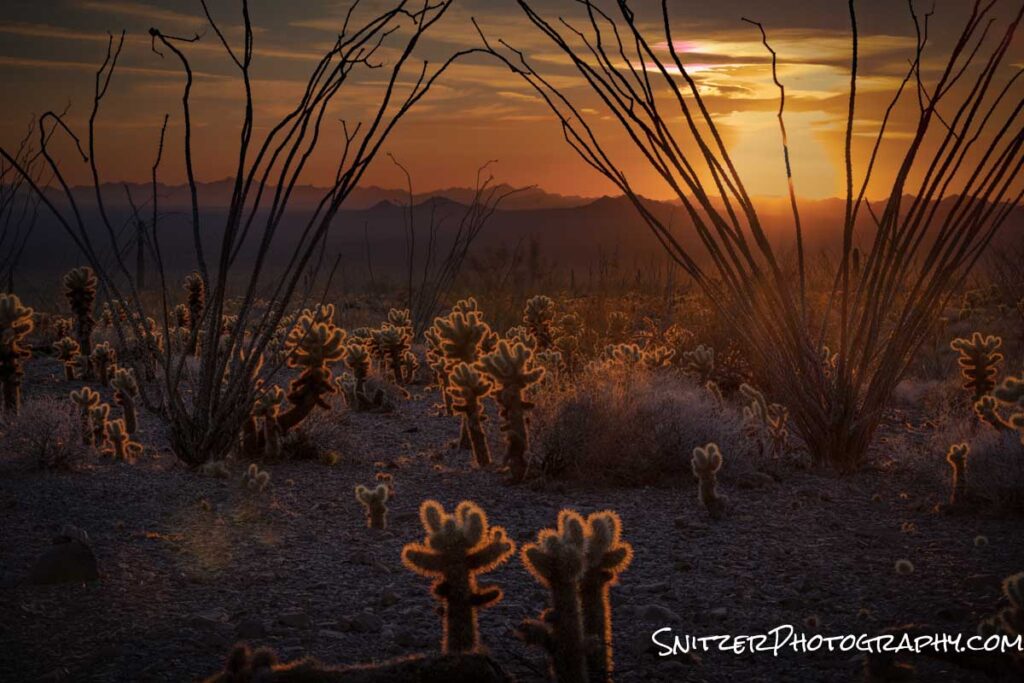
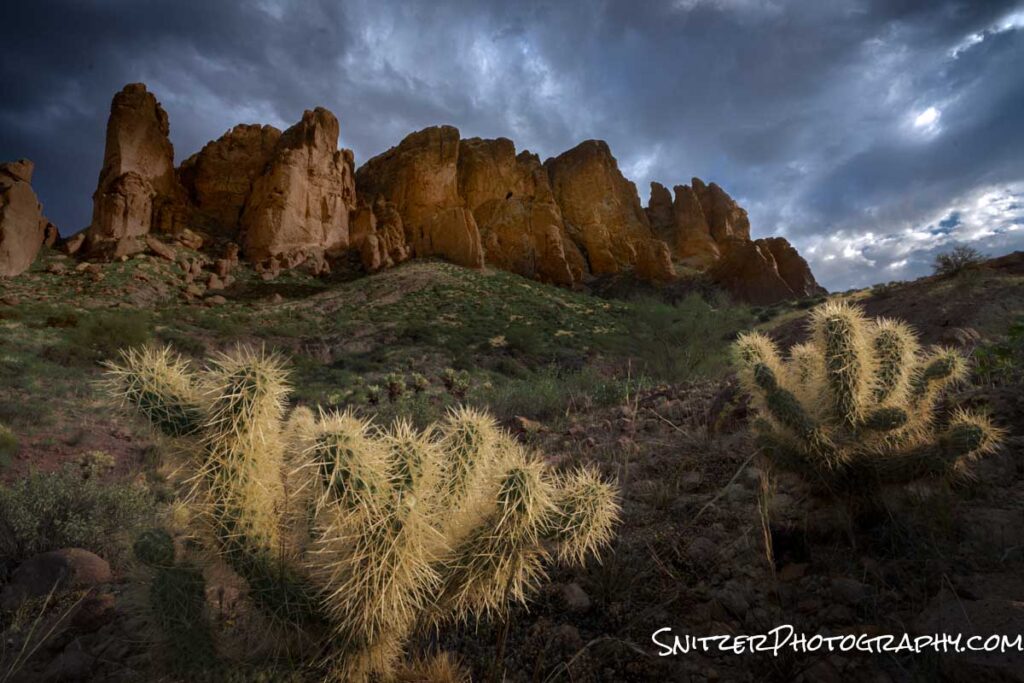
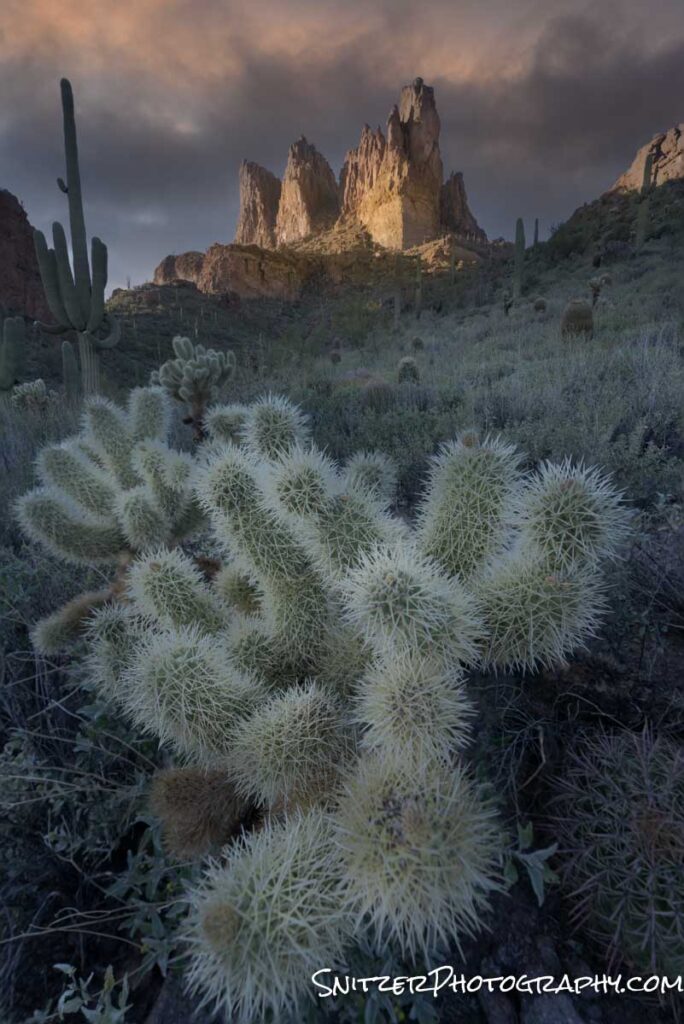
This guy is a Balloon Cactus plant.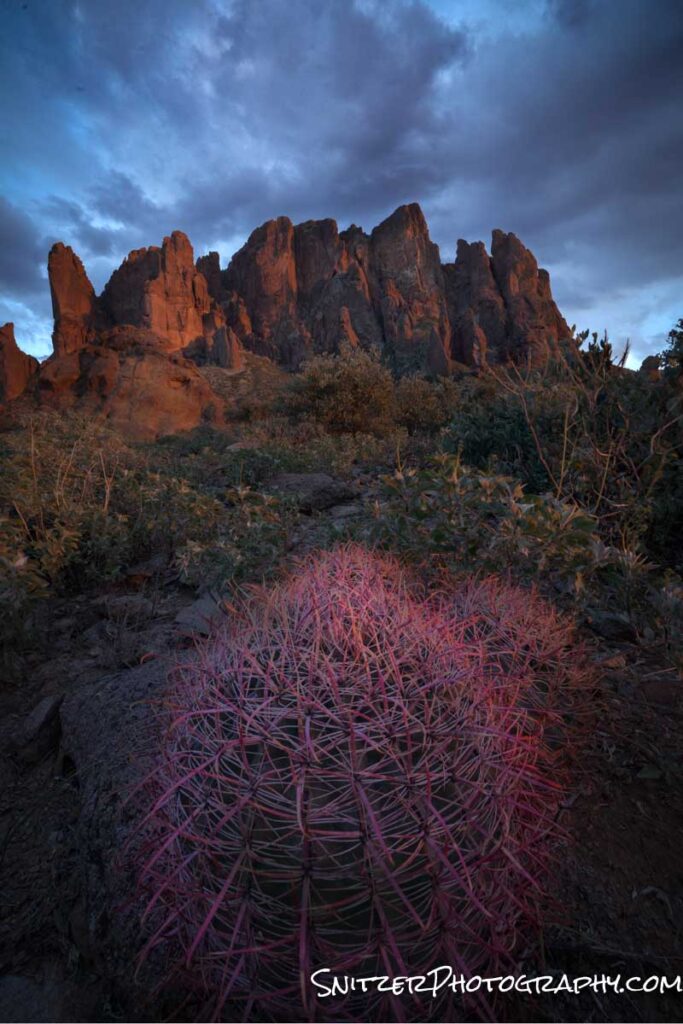
This shot features the Saguaro cactus (the really big guys).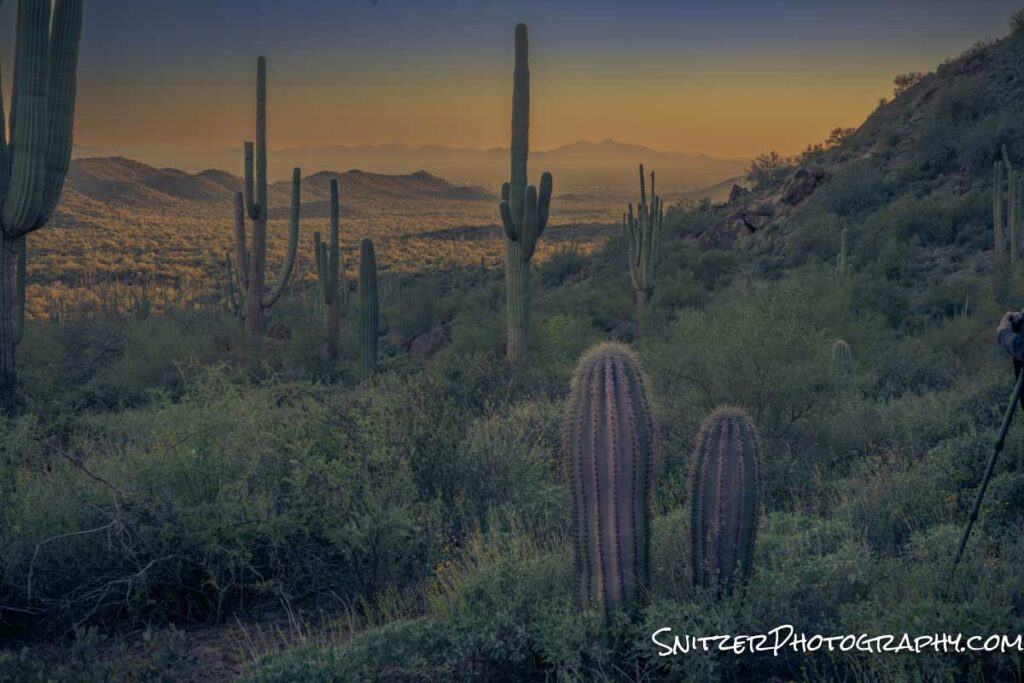
Snitz’s Sedona photo/hiking adventure
Sedona, Ariz is one of my fav places to hike. Gorgeous scenery, awesome weather (excepting summer), and little driving required (most hikes 10 mins from town). It’s also a great place for nature photog! Some of my favorite places to shoot include:
Crescent Moon Picnic Area: Great views along Oak Creek overlooking Cathedral Rock. https://www.alltrails.com/explore/trail/us/arizona/crescent-moon-ranch-at-red-rock-crossing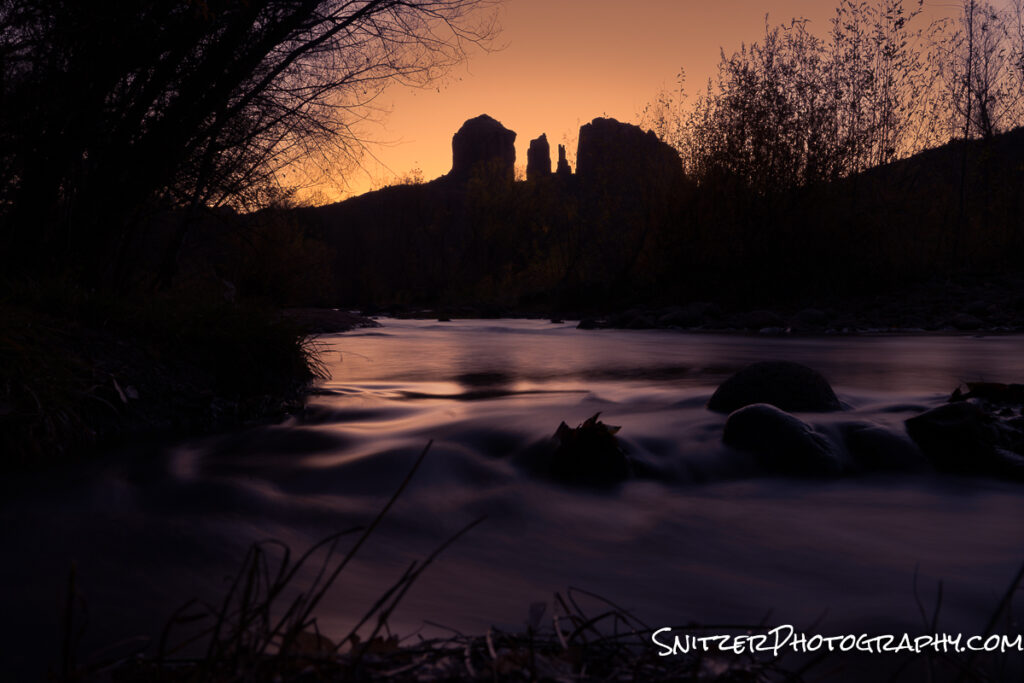
Upper Red Rock Loop: Several awesome pullouts provide a view of Cathedral and Bell Mountain.
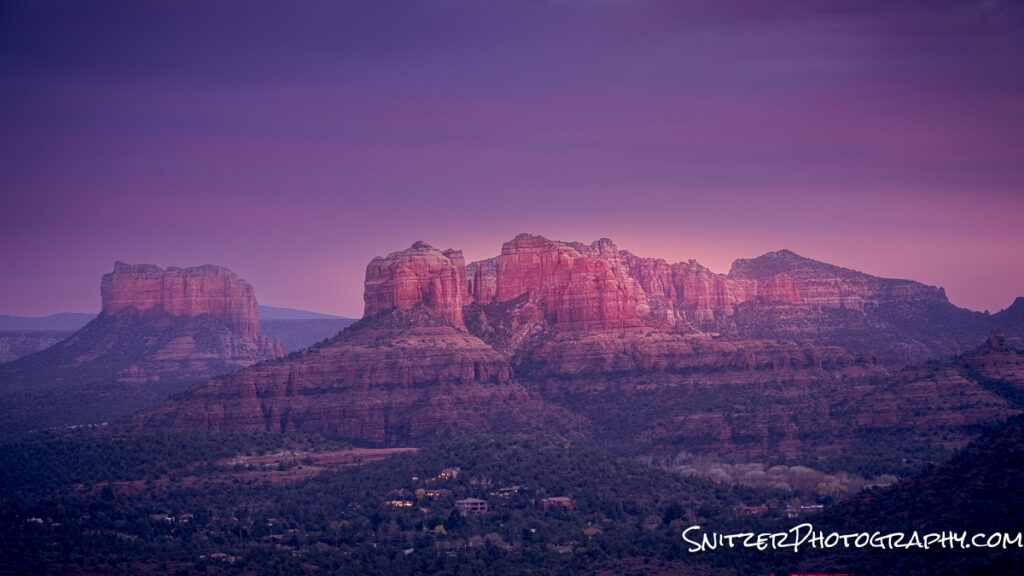
Airport Mesa Viewpoint (& attached trail): Not to be confused with the airport viewpoint above. This hiking spot has only about 8 parking spaces. It provides trails with 360-degree panoramic views of the entire valley! After a rain, reflecting pools form on the rock face providing great ops to shoot low and reflect the mountains. https://www.alltrails.com/explore/trail/us/arizona/sedona-airport-loop-trail
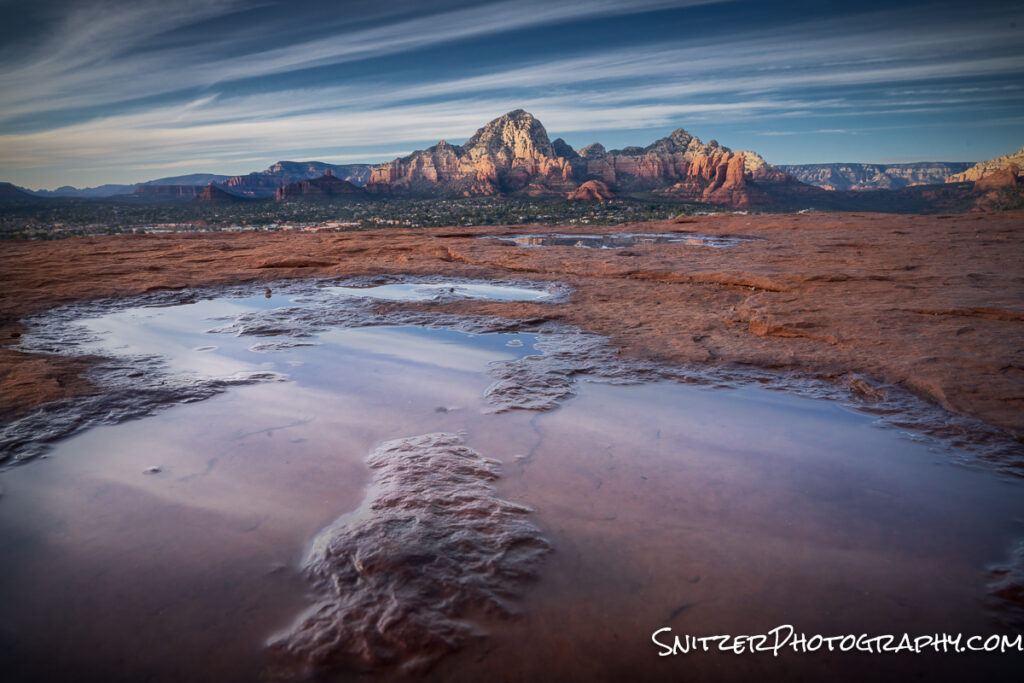
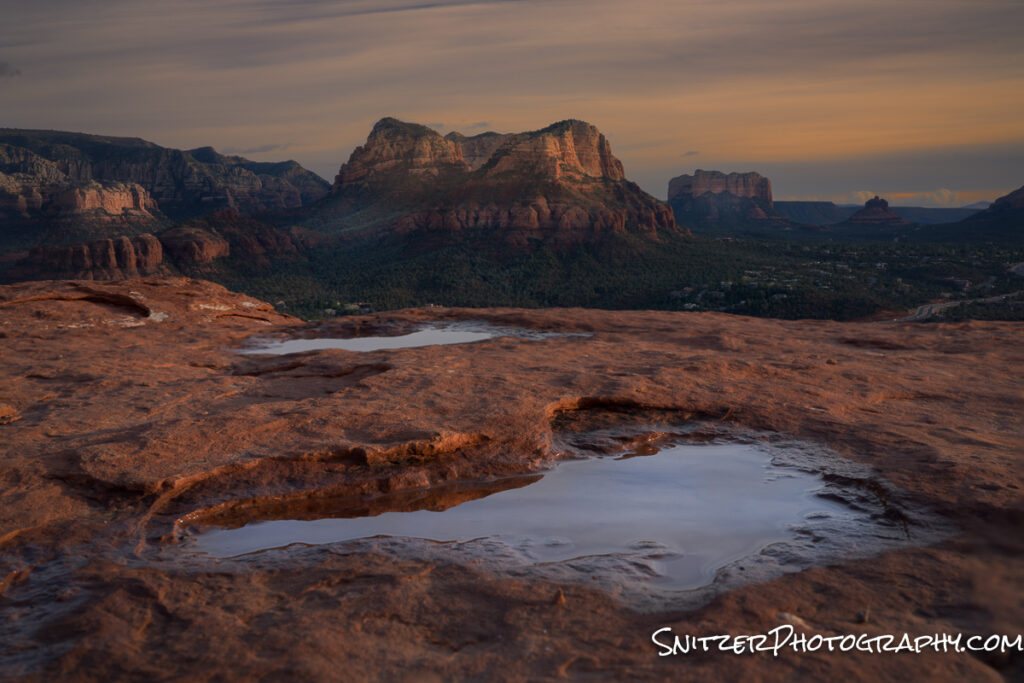
Don’t be afraid to use your telephoto lens to capture some far-away action. This shot was taken shortly after dawn with a 300mm lens.
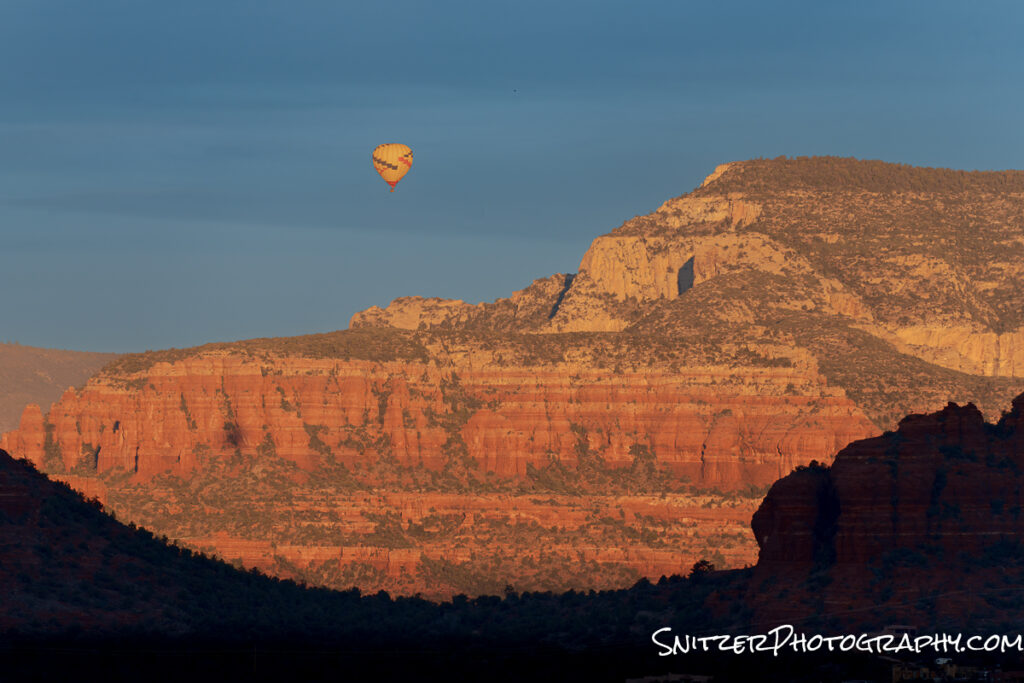
Boyton Canyon to the Subway: The Subway is a detour off the main path that while impressive may prove a bit hair raising for some hikers. Requires a good level of fitness and some climbing experience. https://www.alltrails.com/explore/trail/us/arizona/boynton-canyon-trail
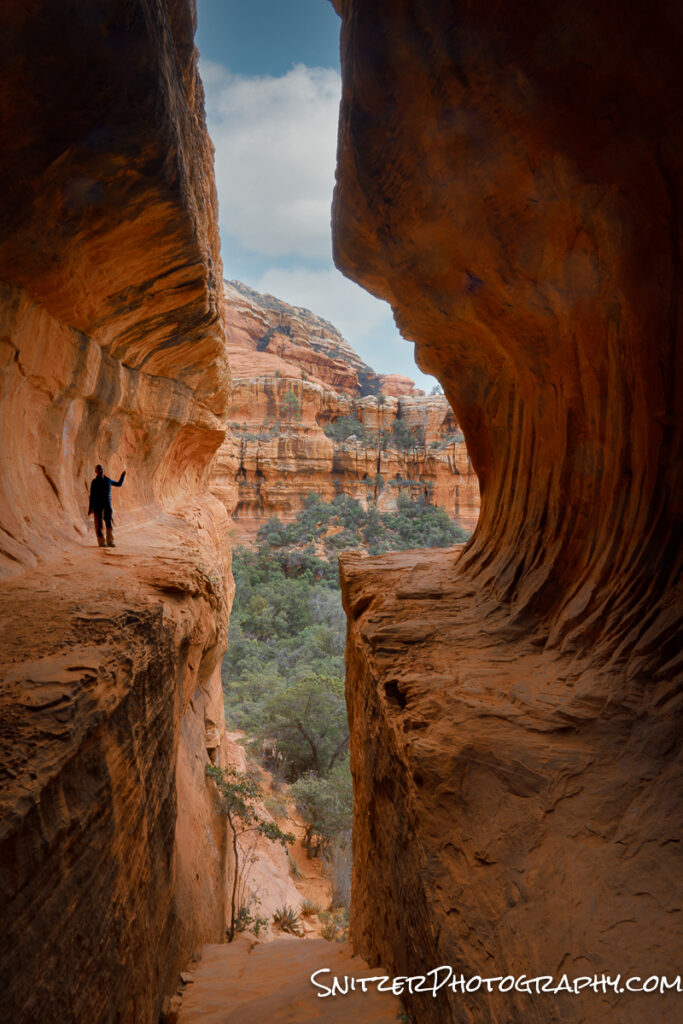
Seven Sacred Pools hike. Great foregrounds. After a rain look for reflecting pools (shoot low). https://www.alltrails.com/explore/trail/us/arizona/soldier-pass-to-brins-mesa-loop
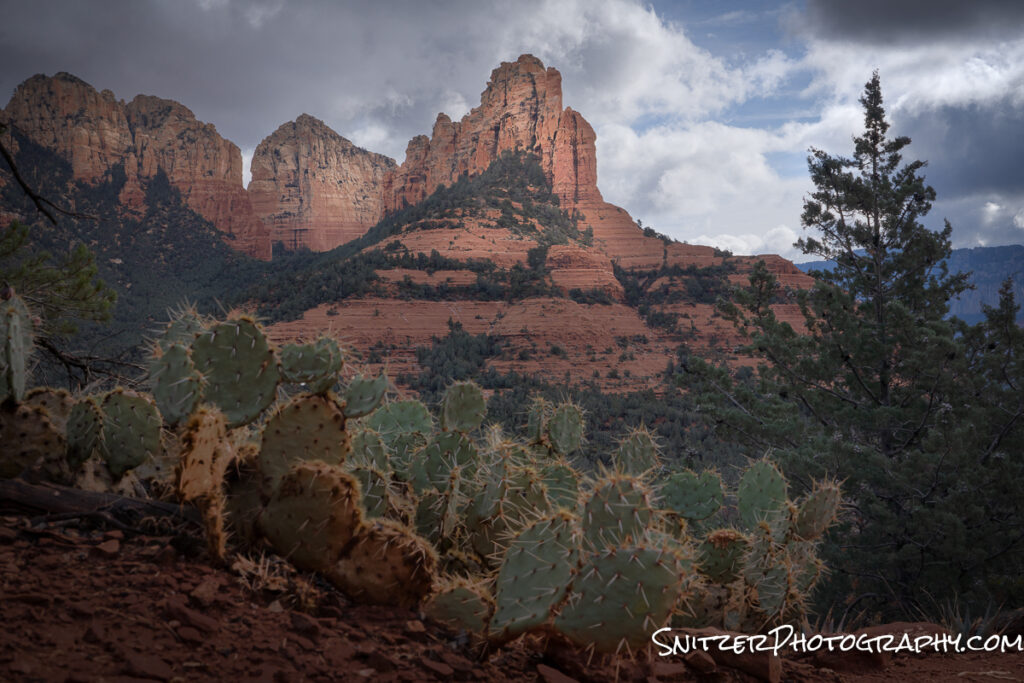
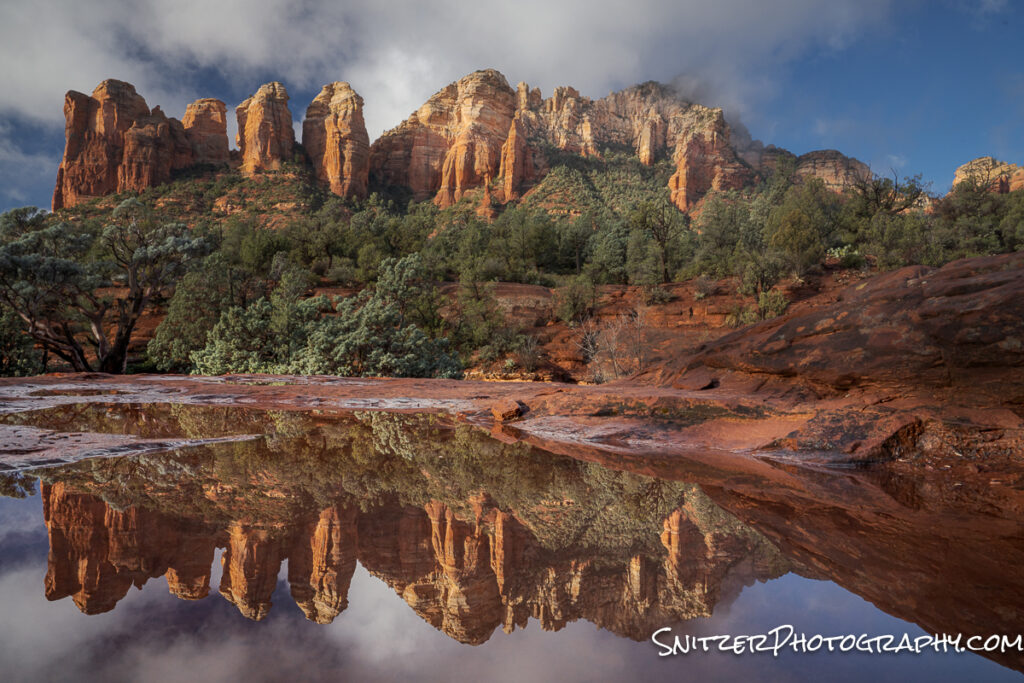
Some of my favorite hikes also include:
Easy/Moderate
Doe Mountain Loop https://www.alltrails.com/explore/trail/us/arizona/doe-mountain-loop-trail
Long Canyon, Deadman’s Pass, Mescal Loop https://www.alltrails.com/trail/us/arizona/mescal-mountain-long-canyon-deadmans-pass-mescal-loop
Secret Slickrock (easy short/great for sunset) https://www.alltrails.com/trail/us/arizona/secret-slick-rock-trail?ref=result-card
Sugarloaf Loop https://www.alltrails.com/trail/us/arizona/sugarloaf-loop-trail
Moderate/Hard
Hangover Trail https://www.alltrails.com/trail/us/arizona/hangover-trail-out-and-back
Sterling Pass https://www.alltrails.com/trail/us/arizona/sterling-pass-trail
Devil’s Bridge via Chuck Wagon Trail (great view, overrun with tourists…everyone flocks to this, I’d skip) https://www.alltrails.com/trail/us/arizona/devils-bridge-via-chuck-wagon-trail
Hard
Bear Mountain https://www.alltrails.com/trail/us/arizona/bear-mountain
Click here to see my original gallery photos: https://www.snitzerphotos.com/Other/Galleries/Sedona-2021/n-XpLtXs/

